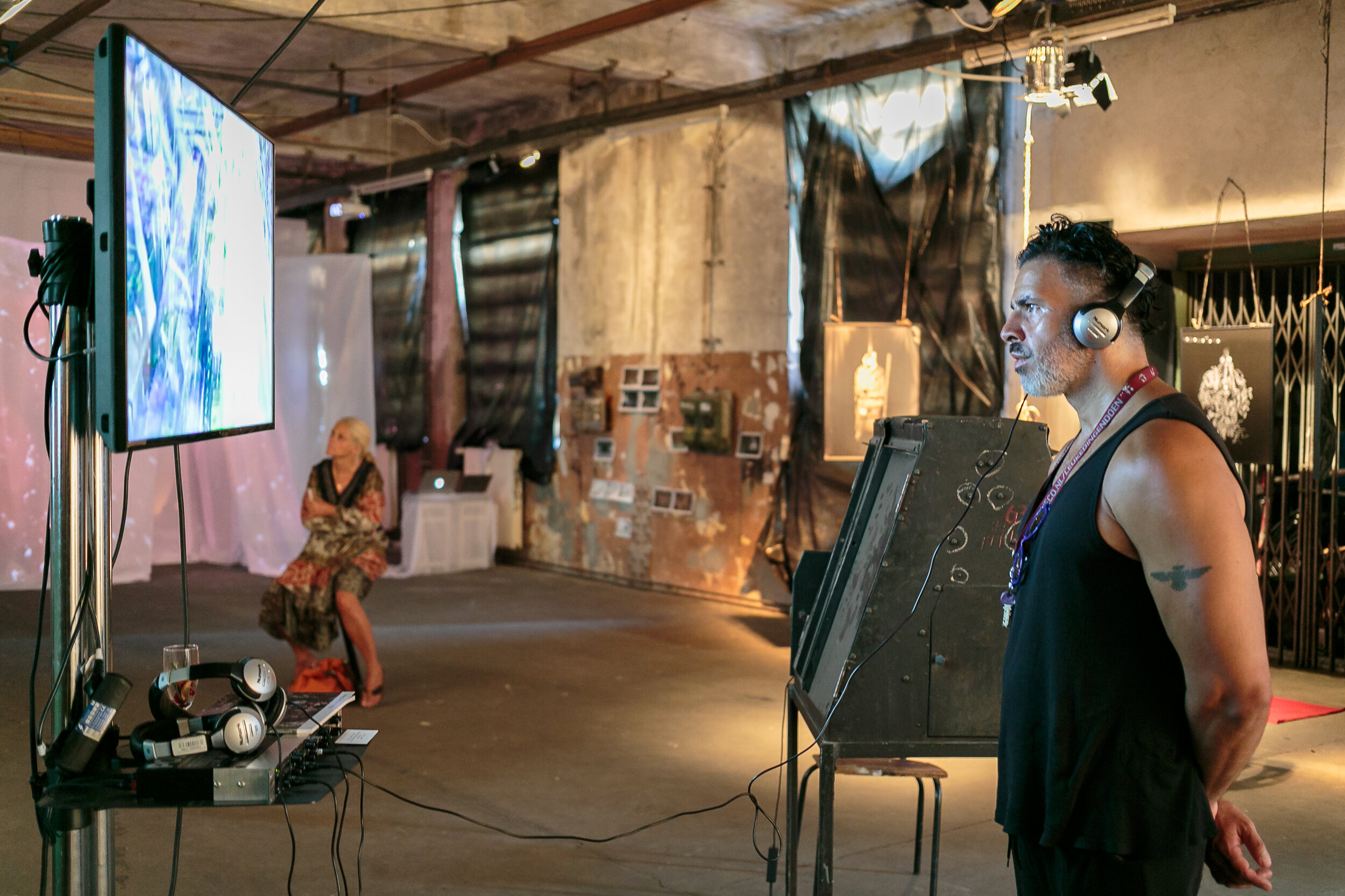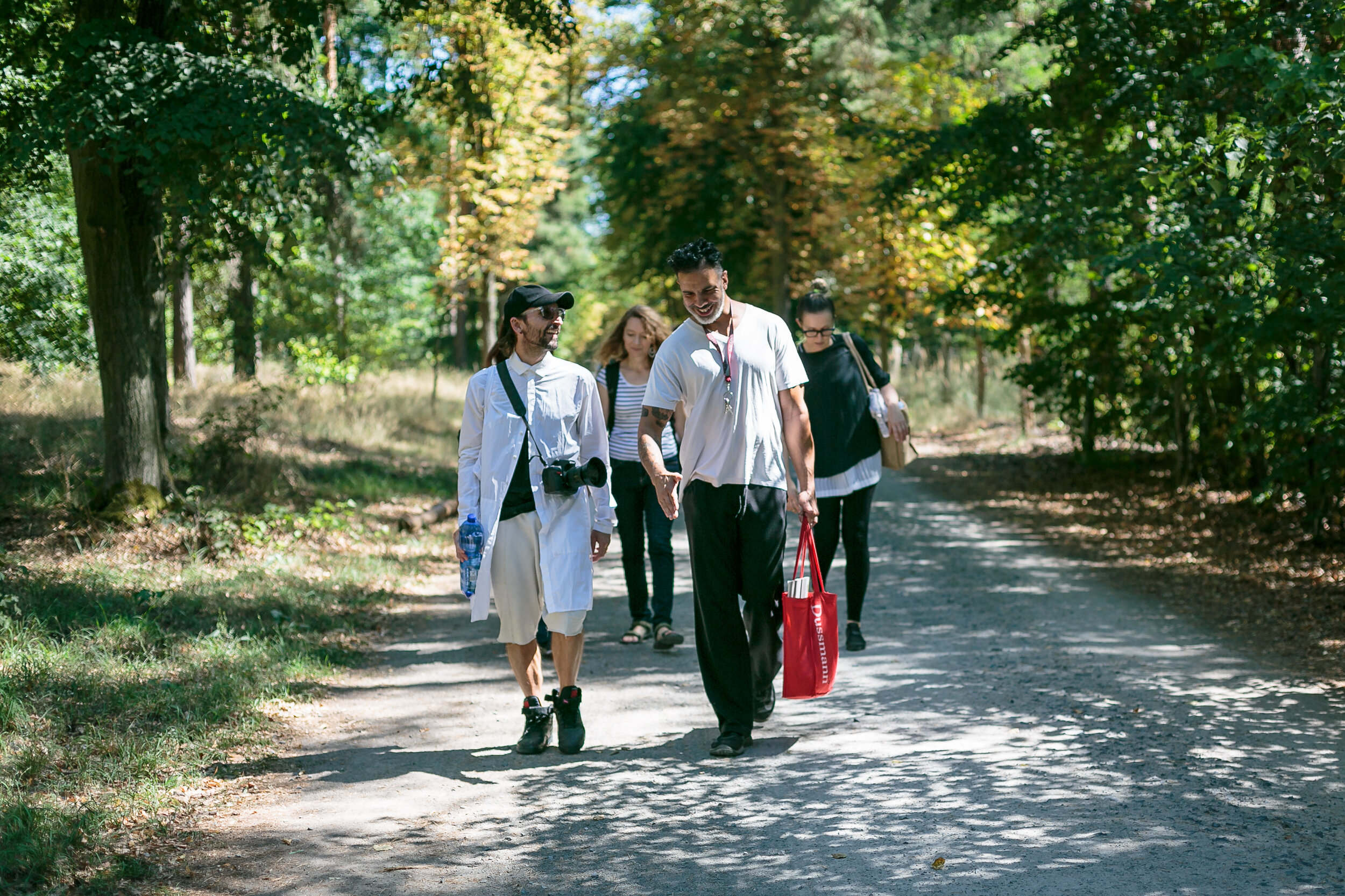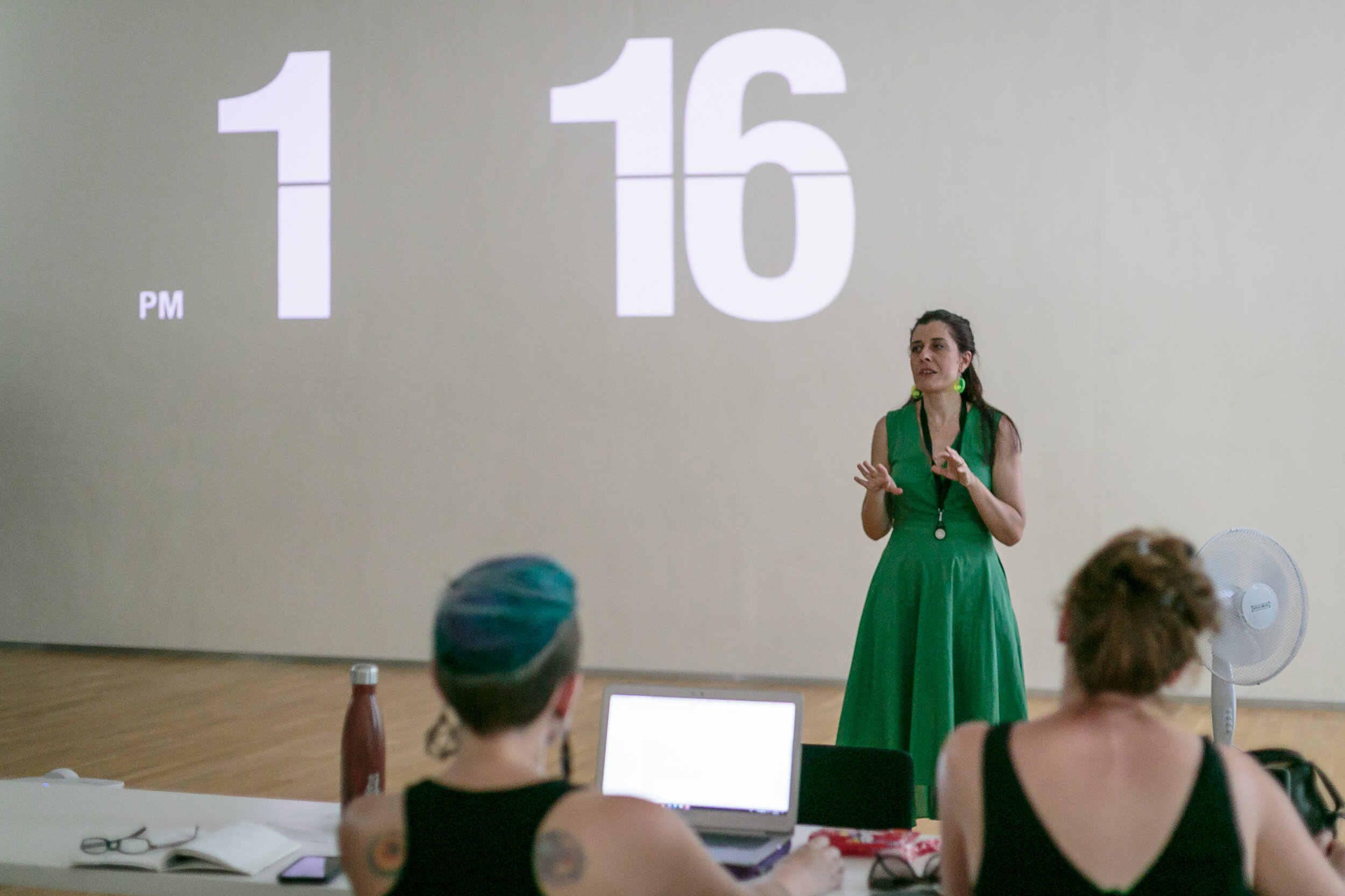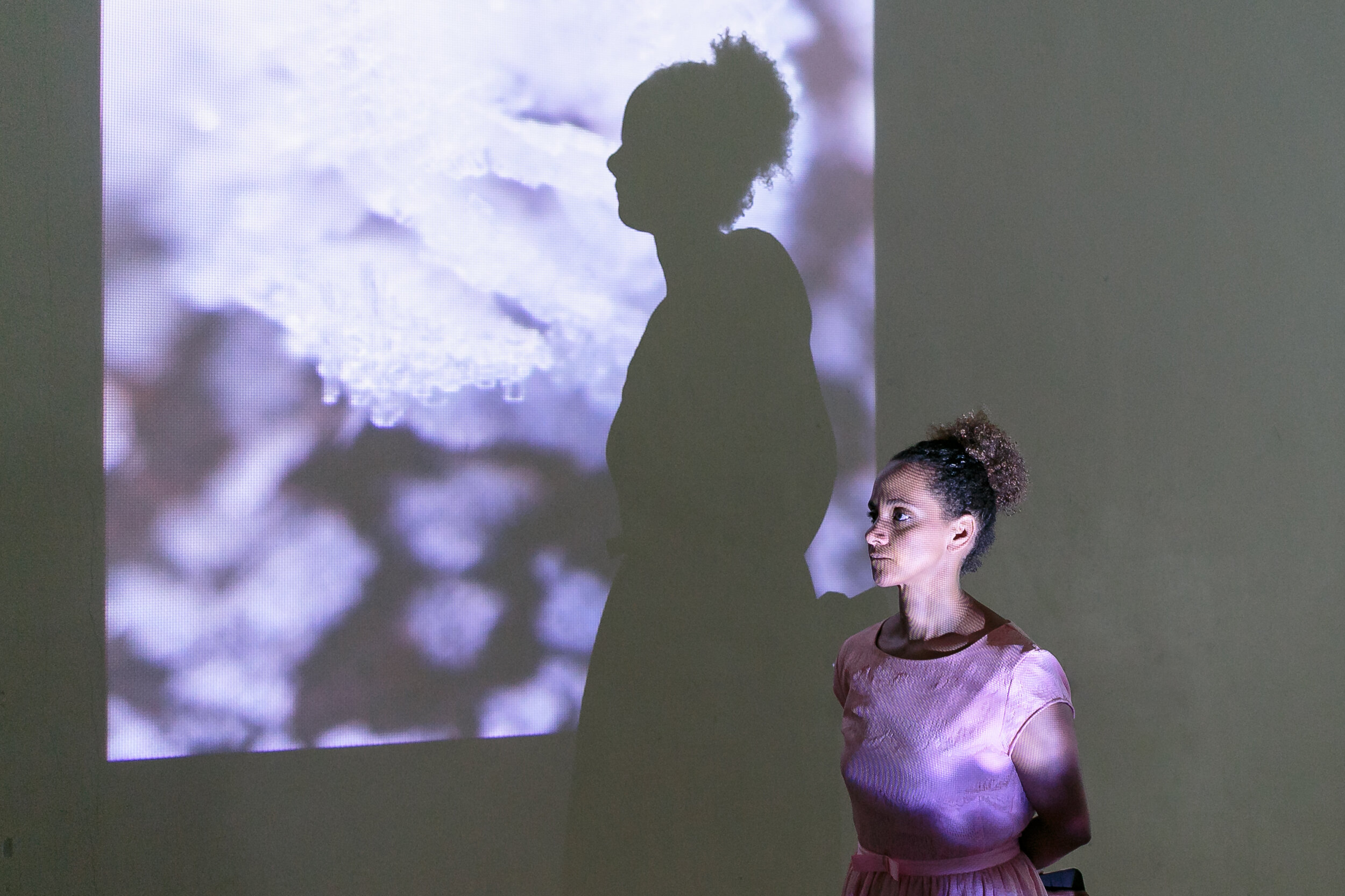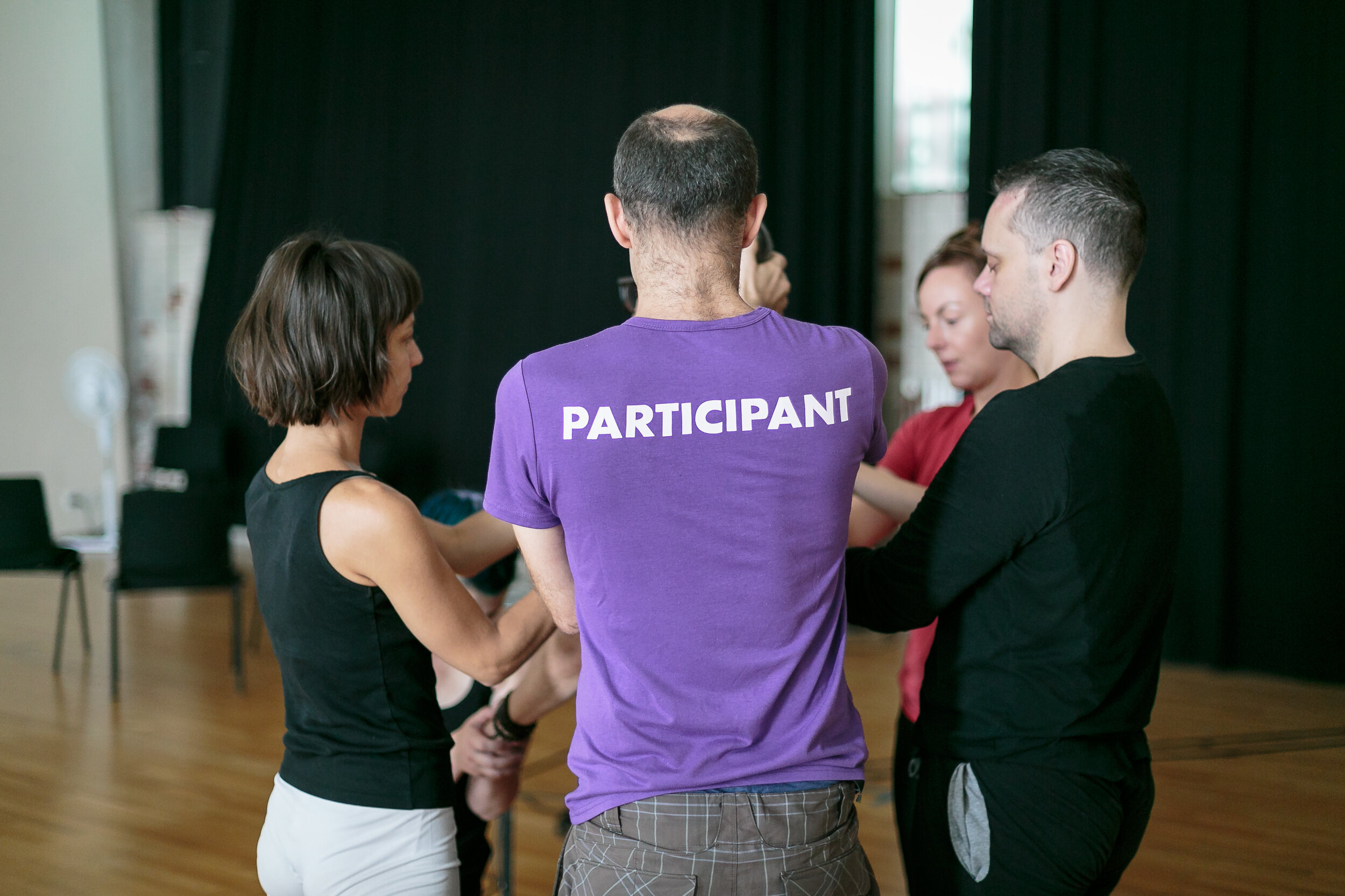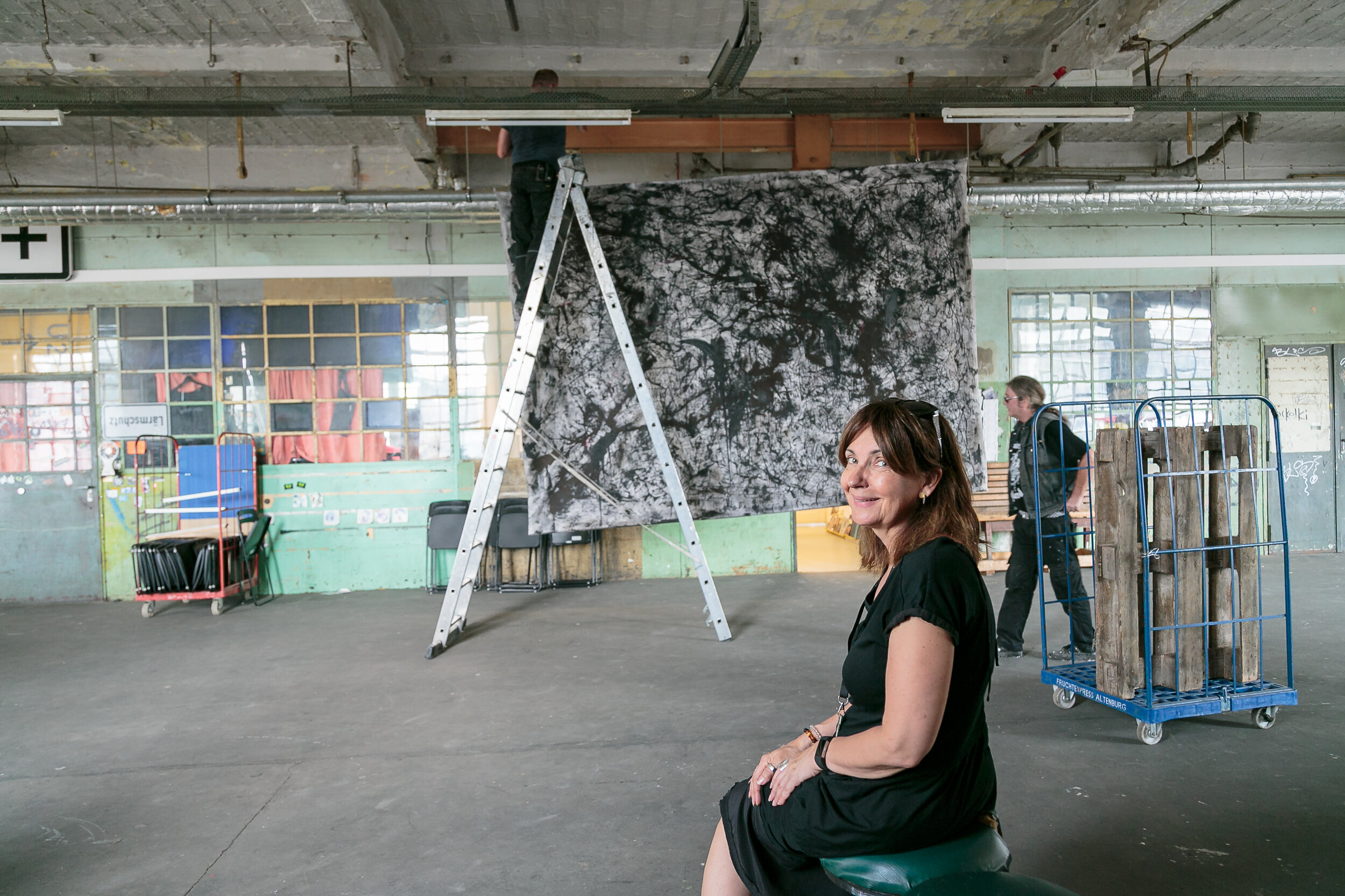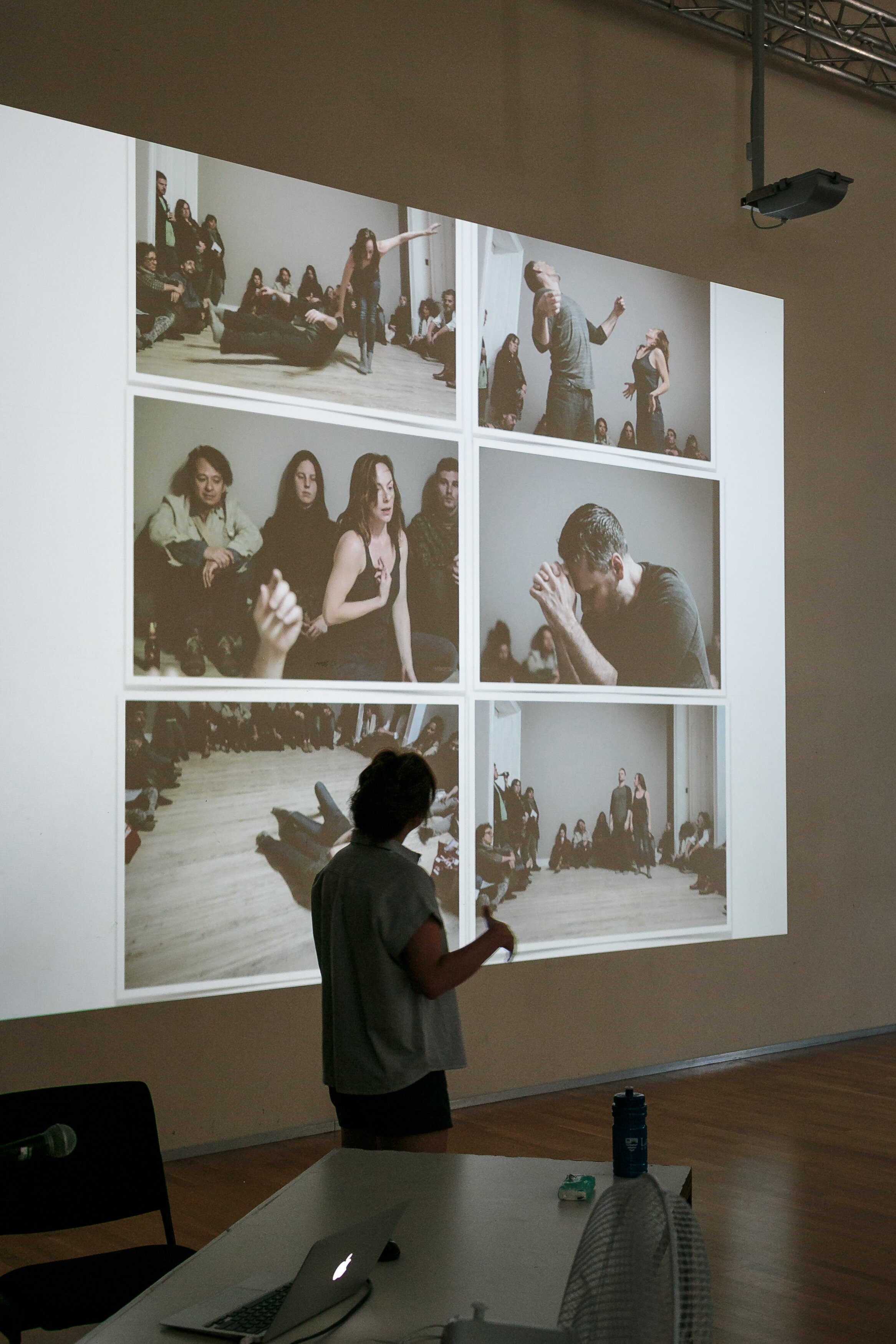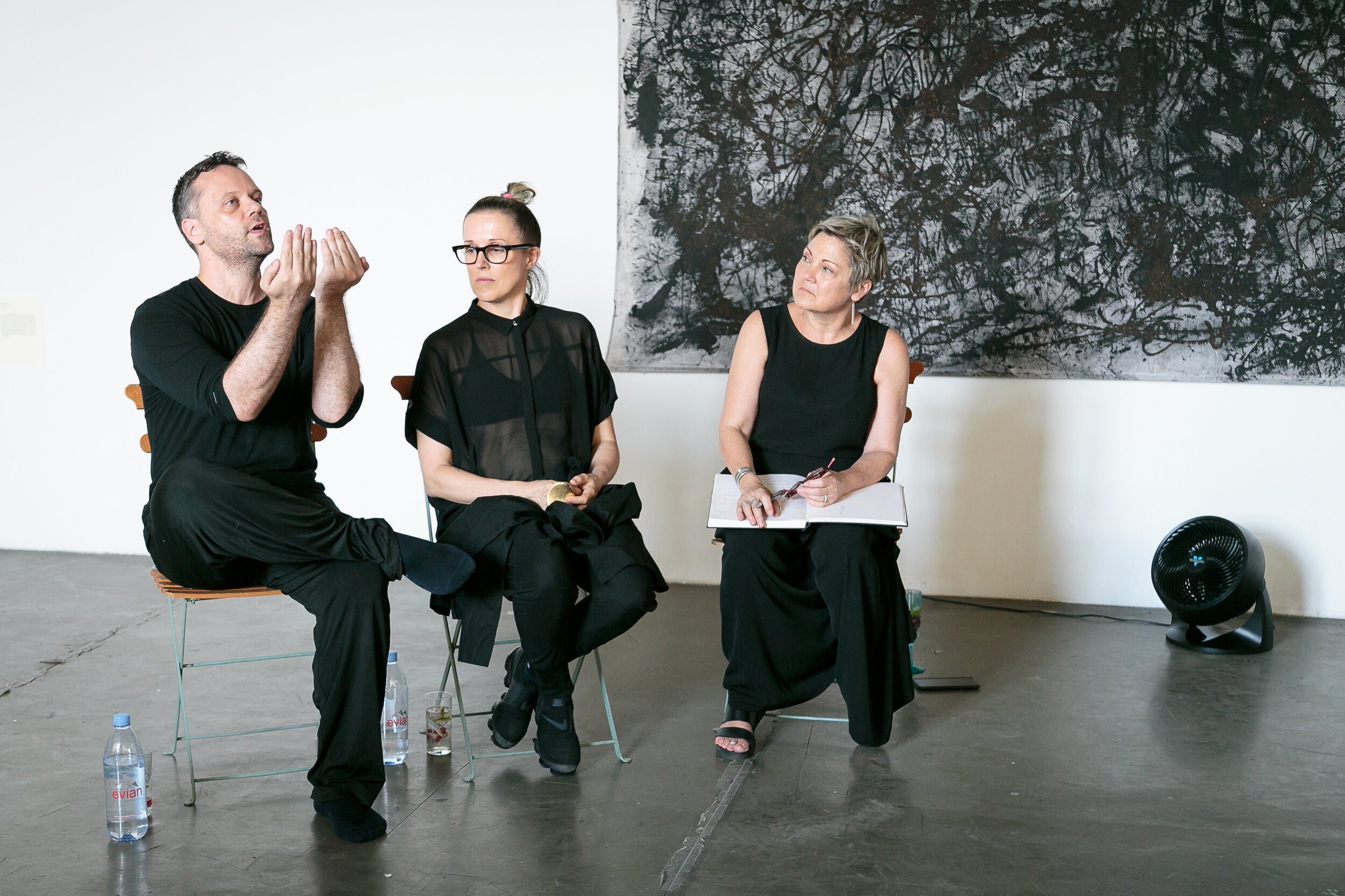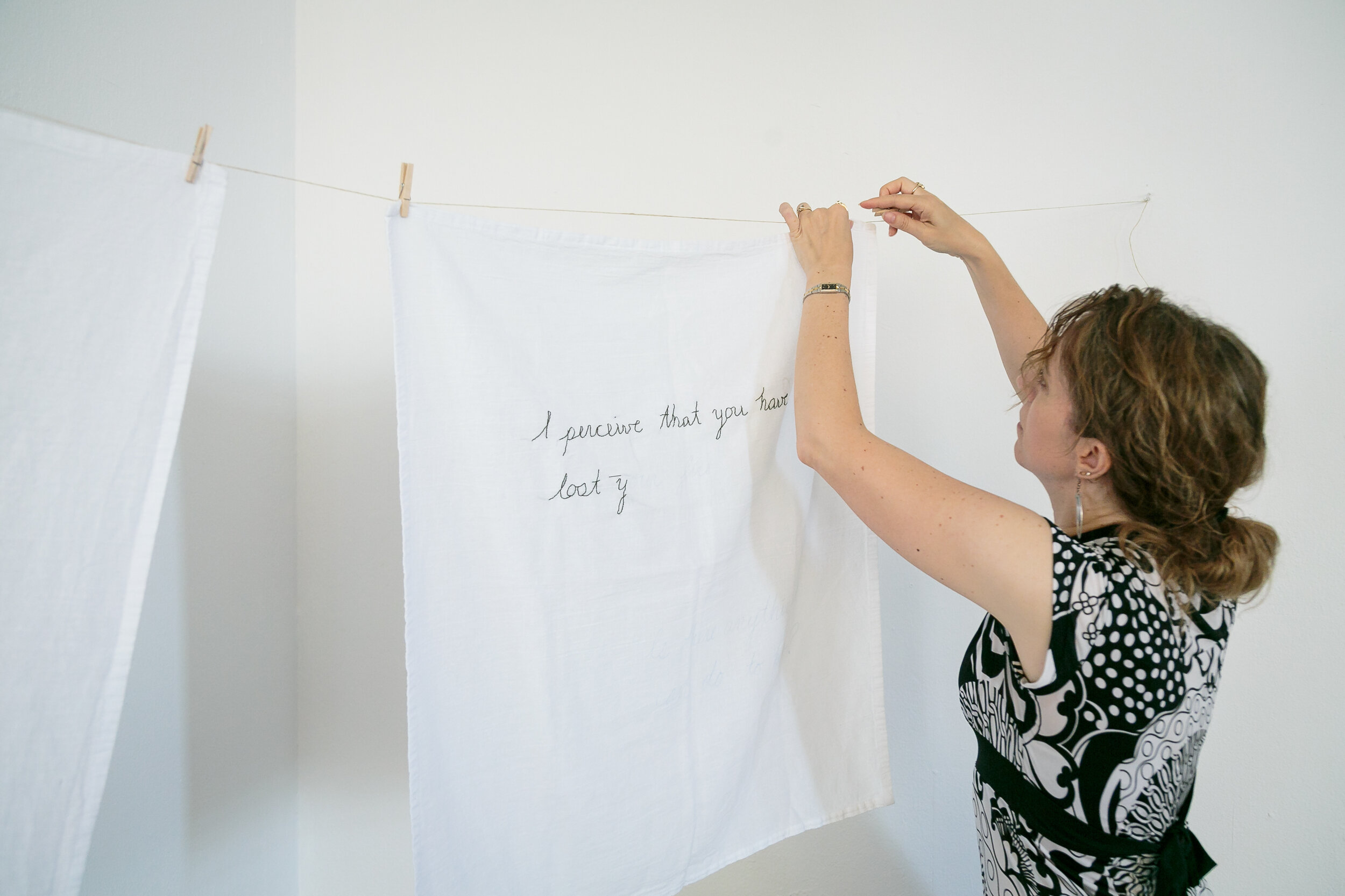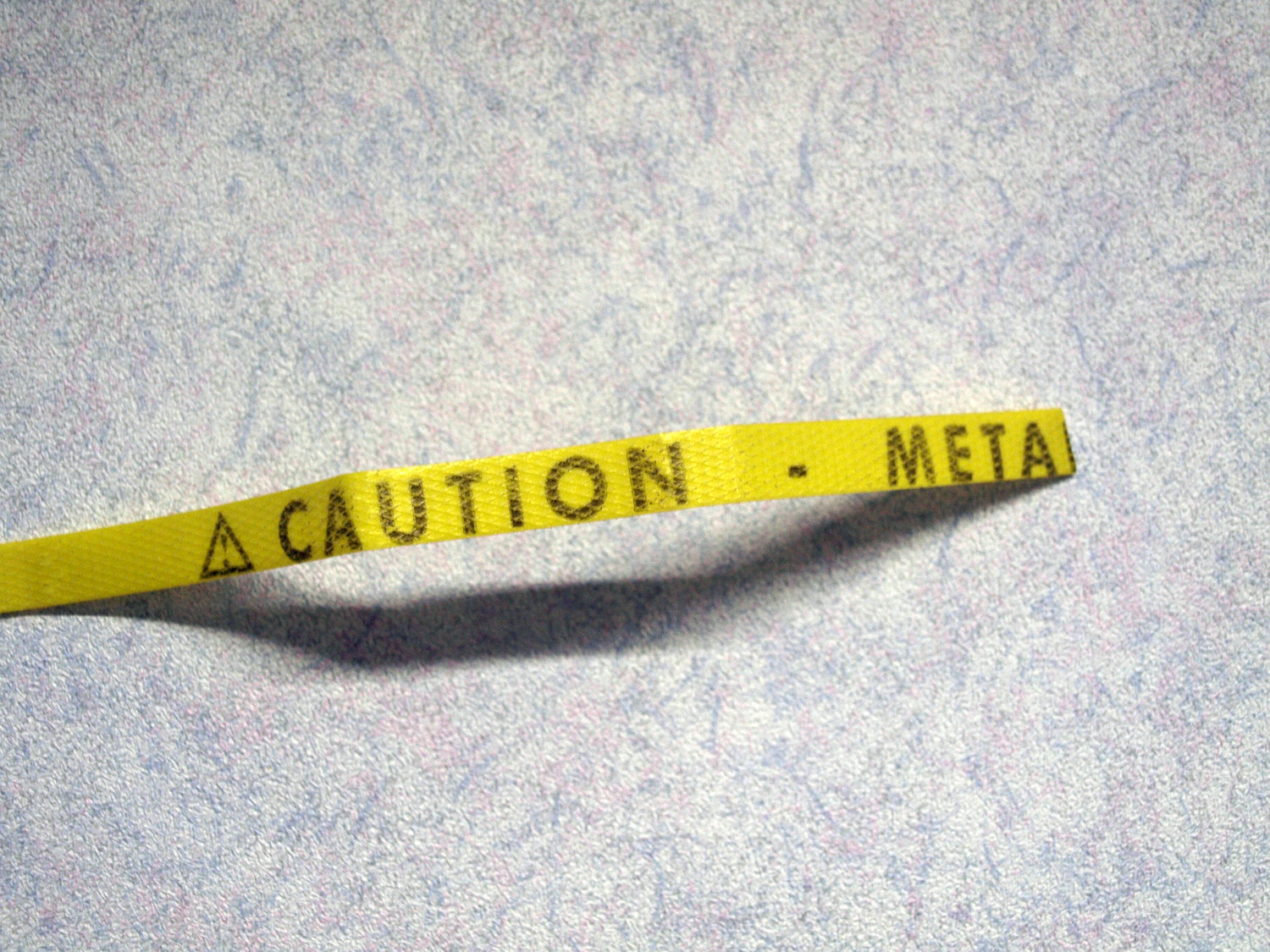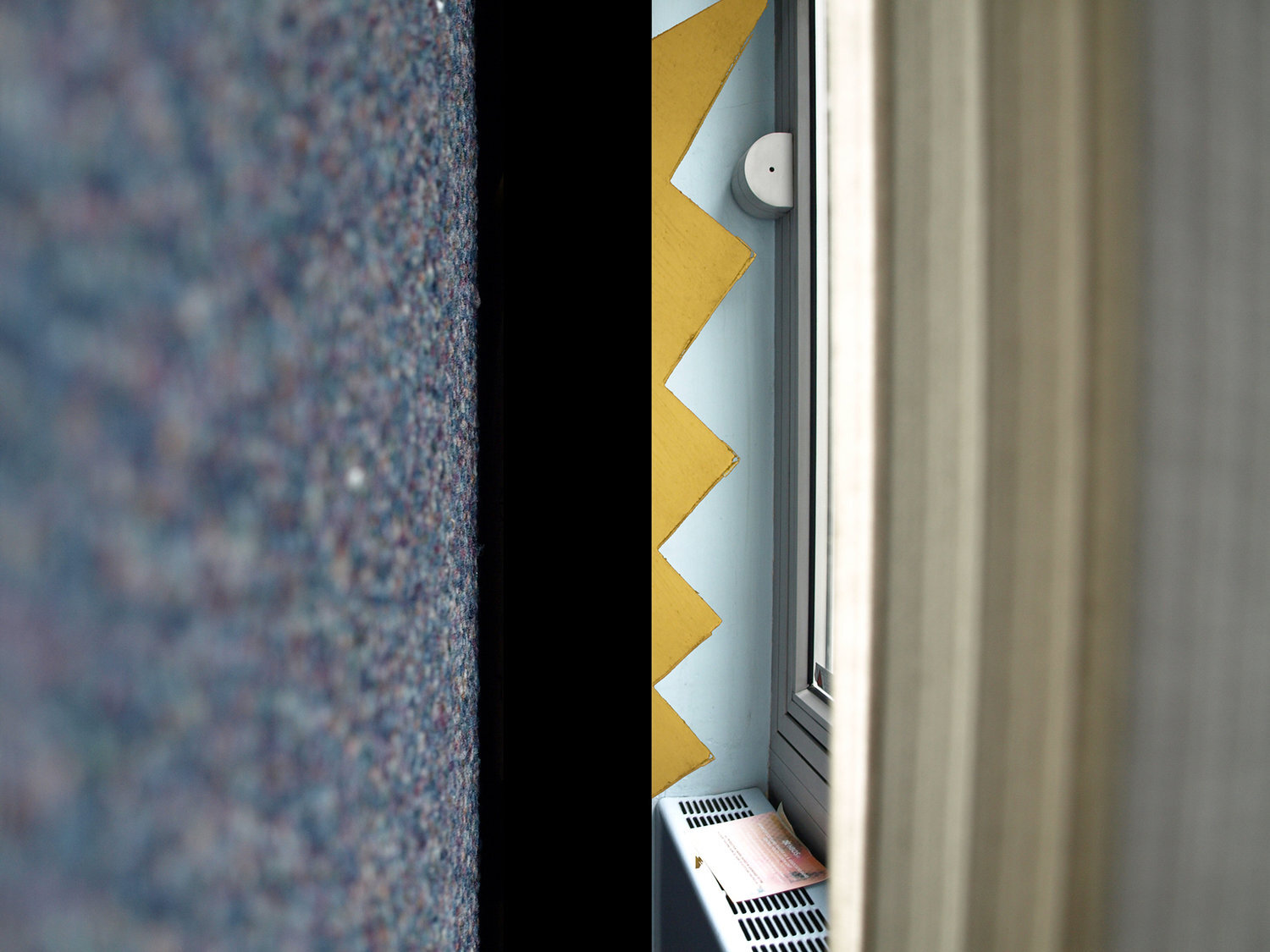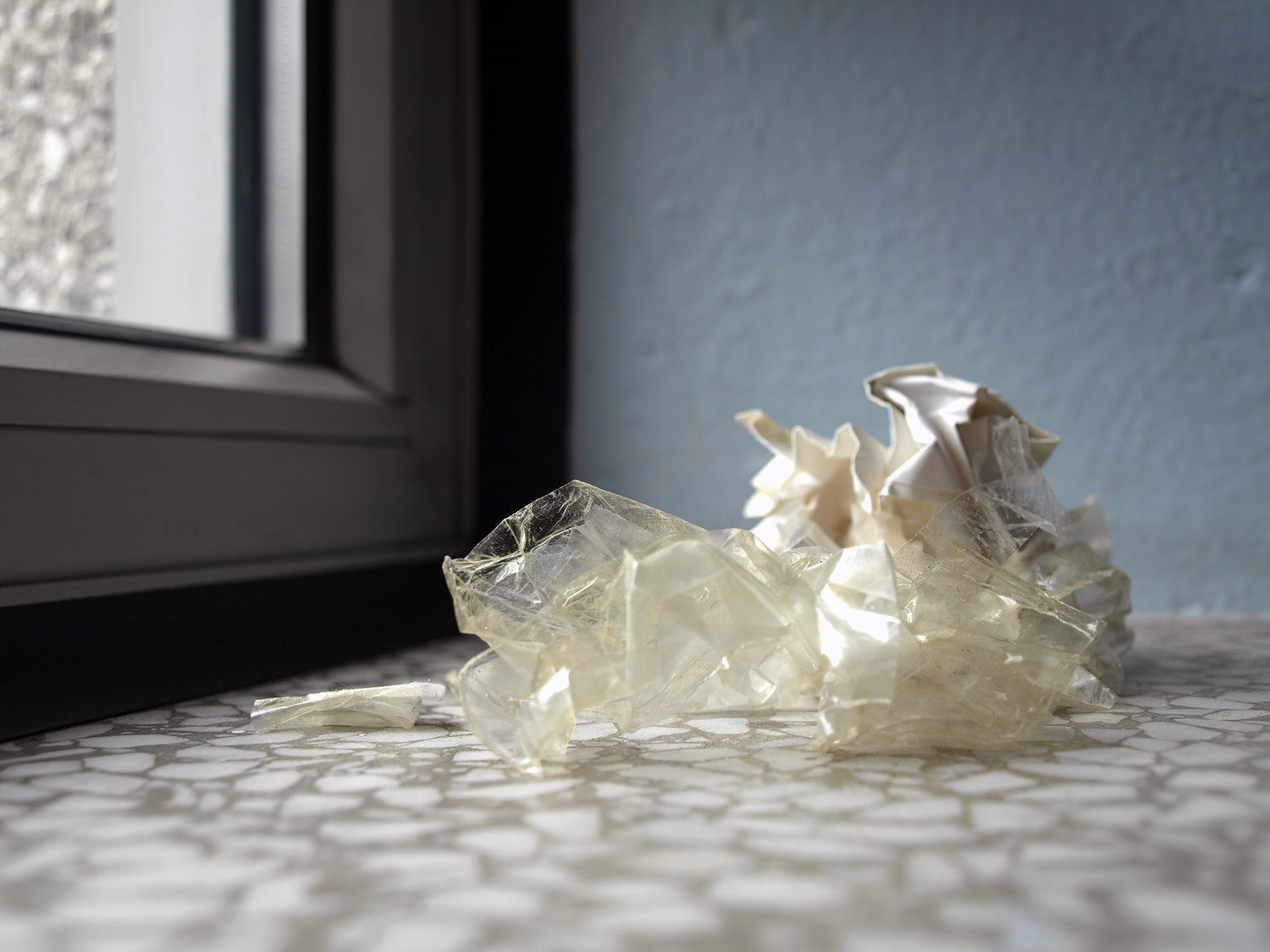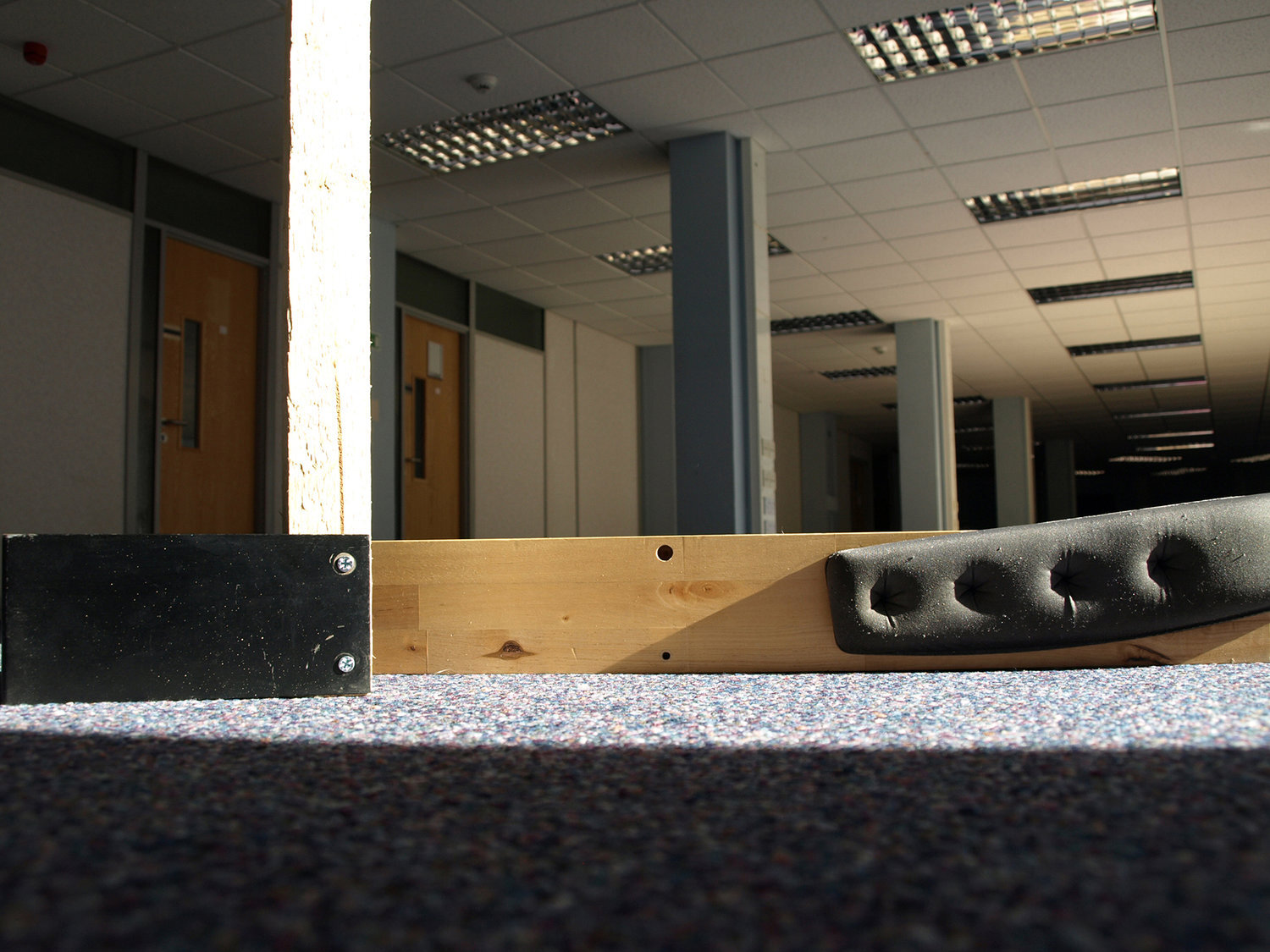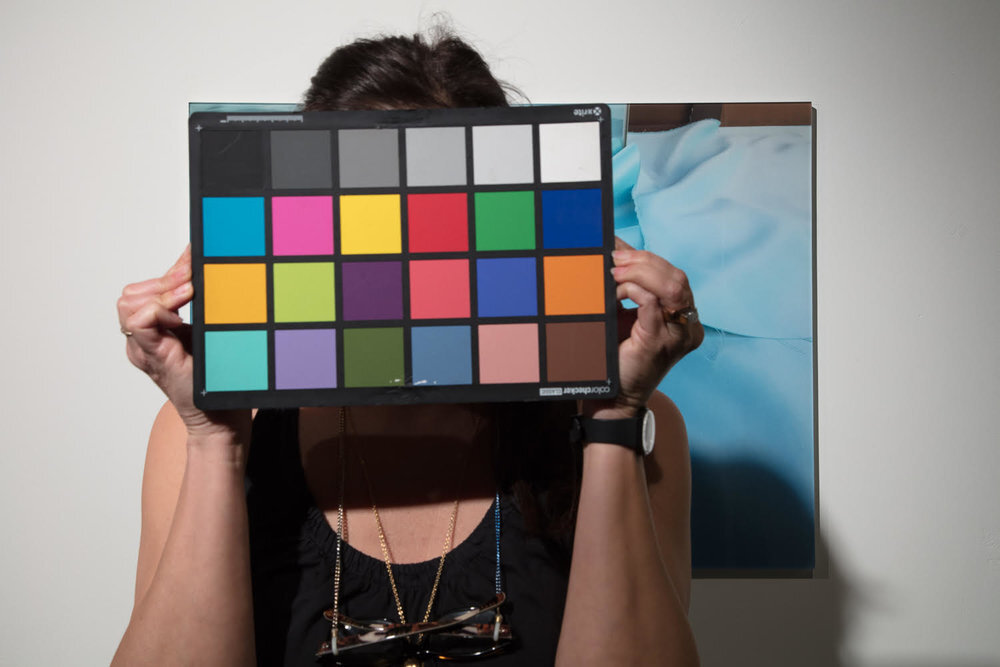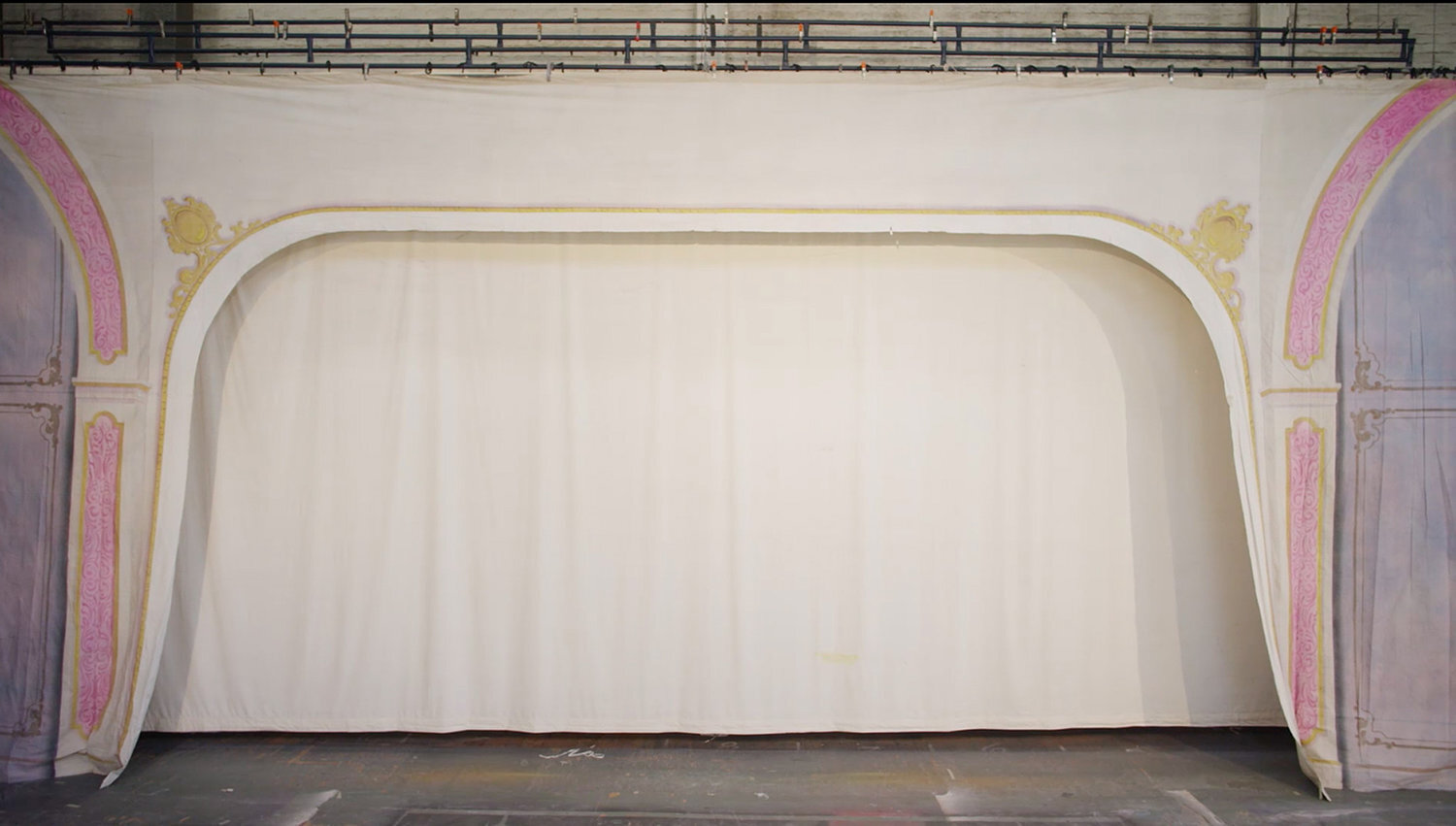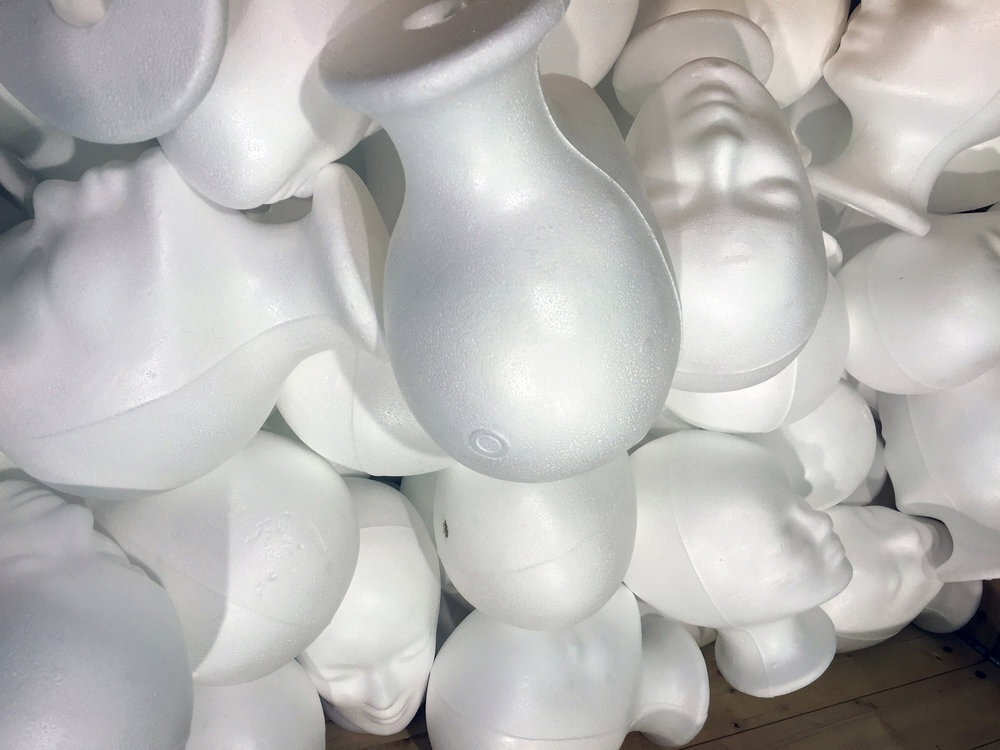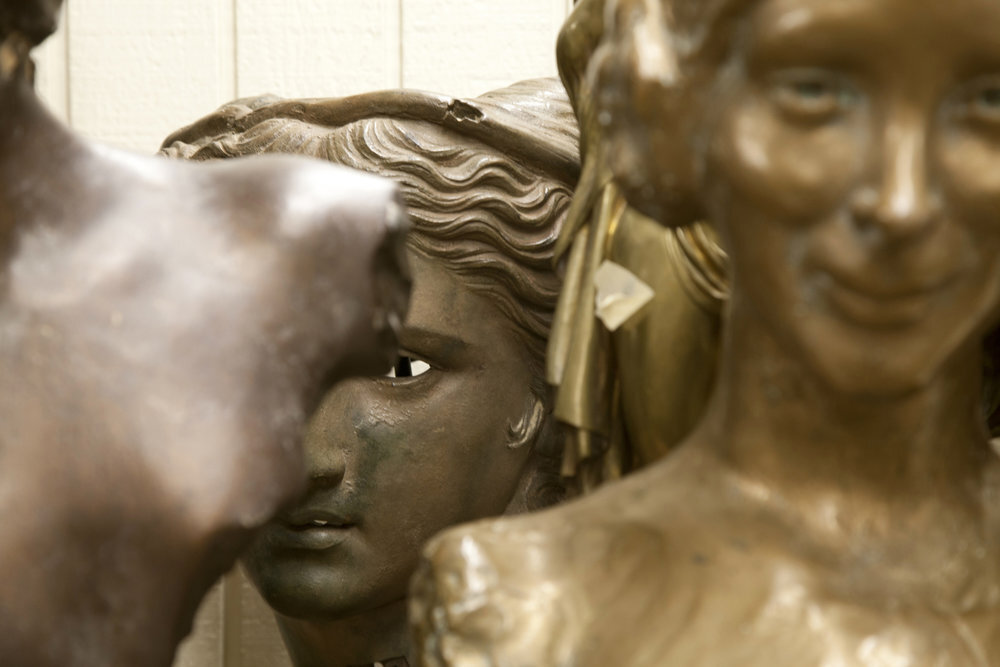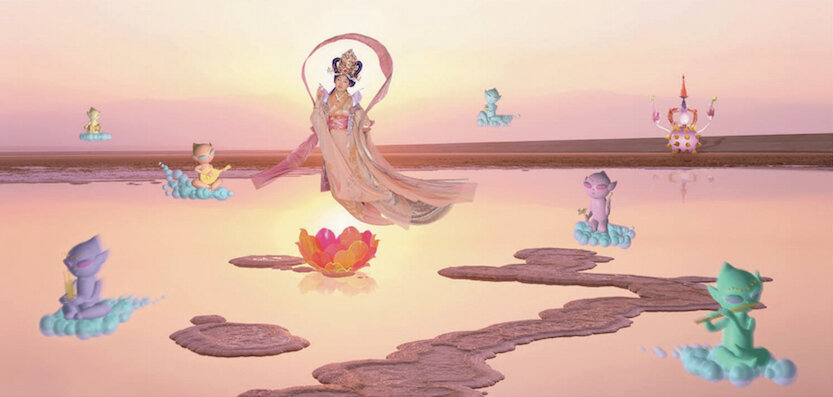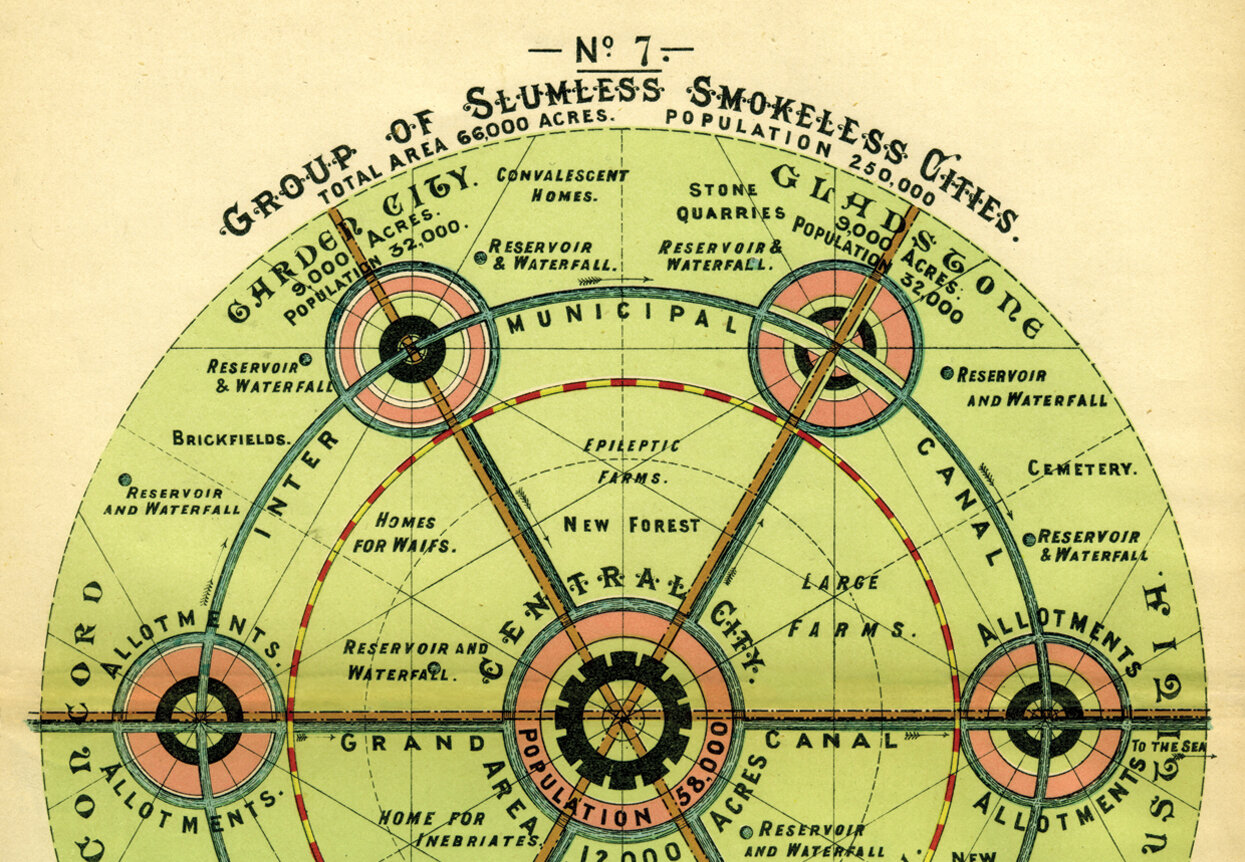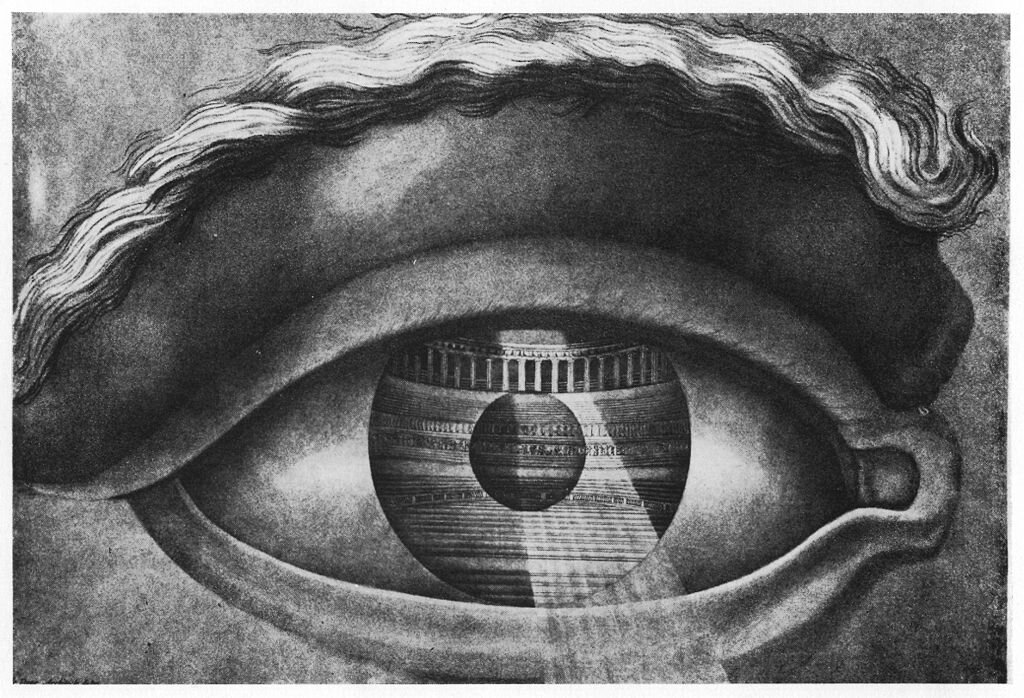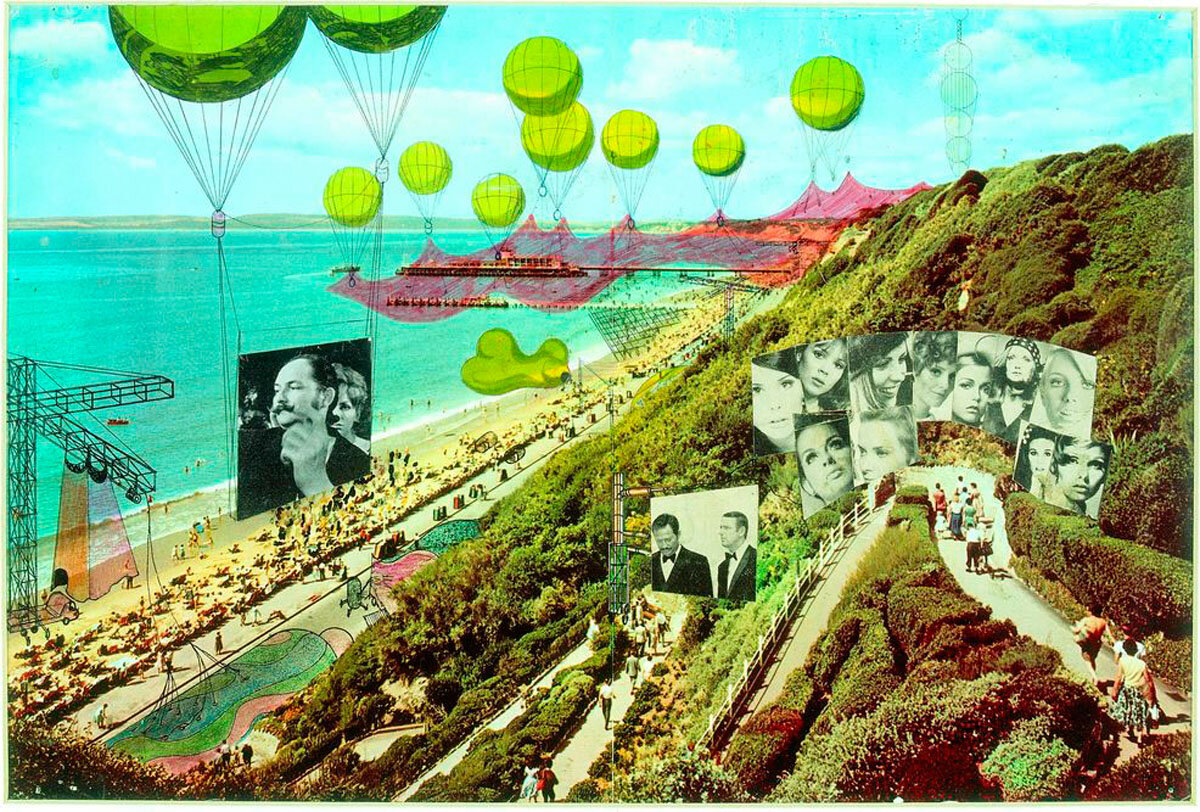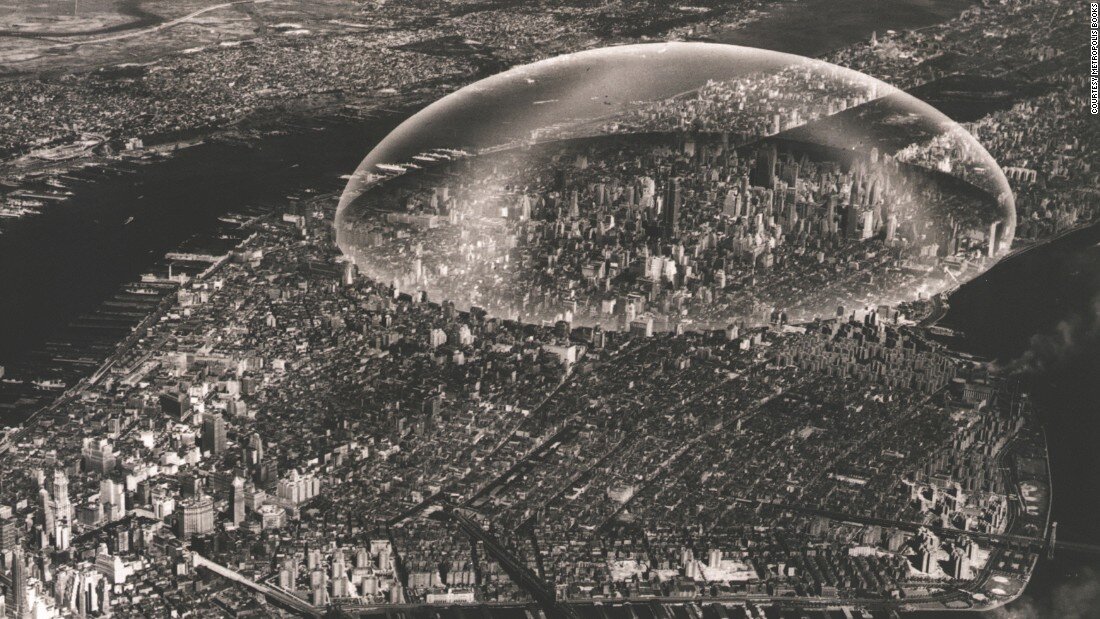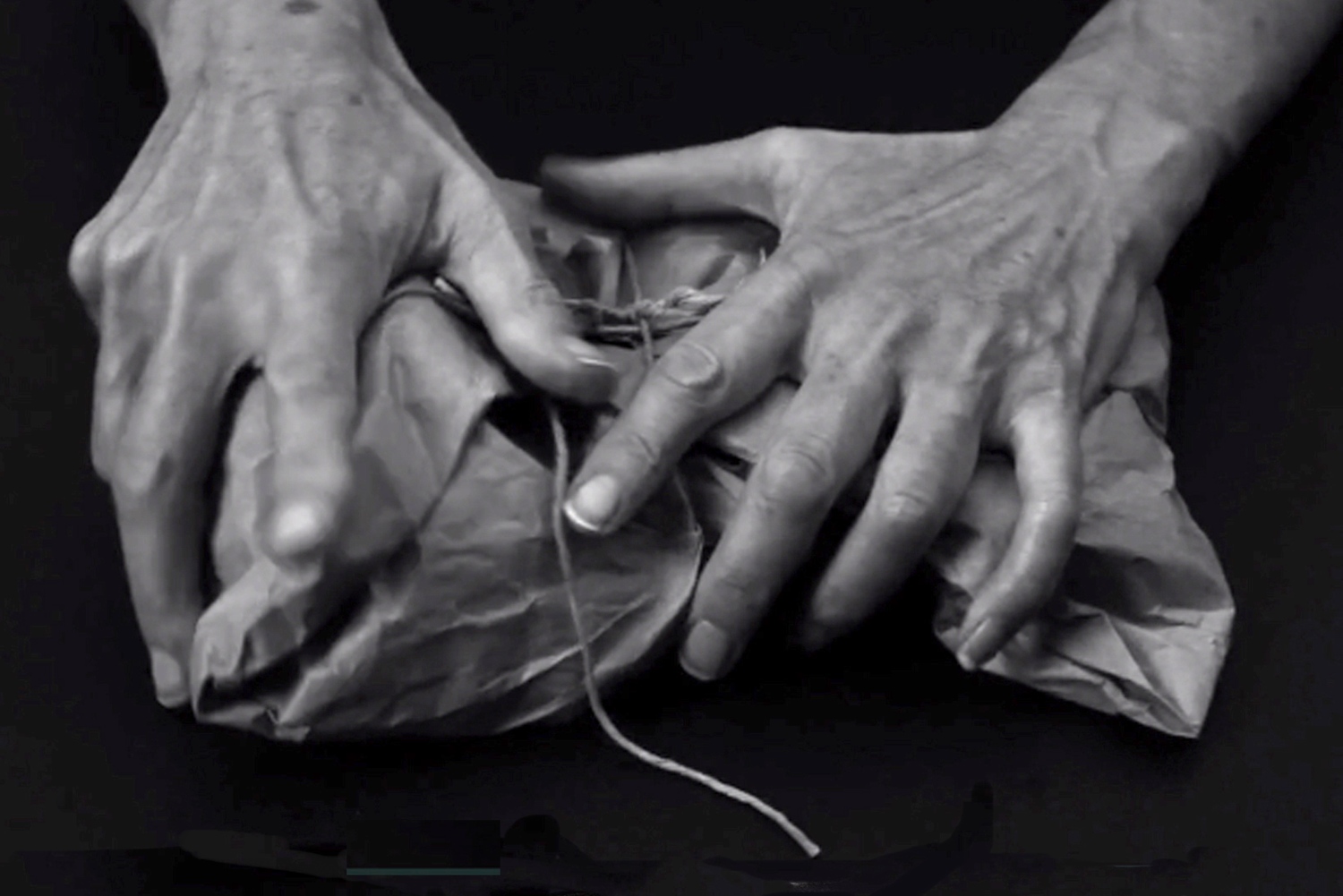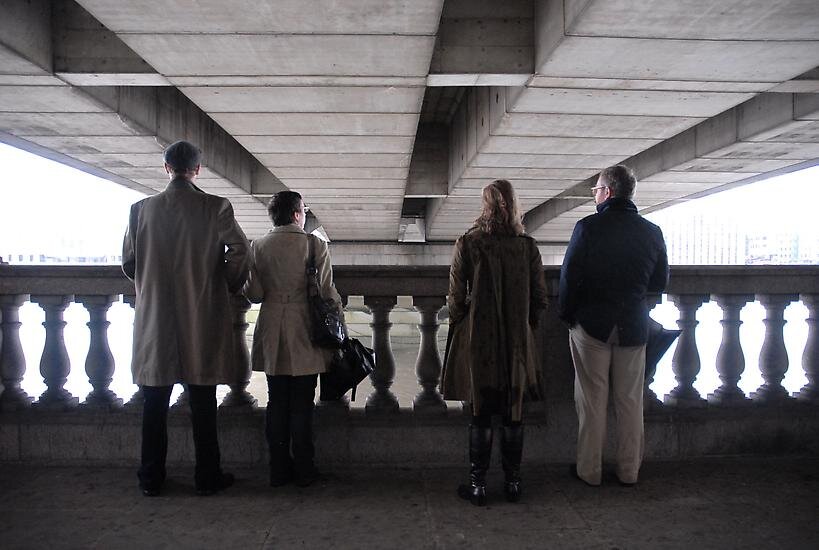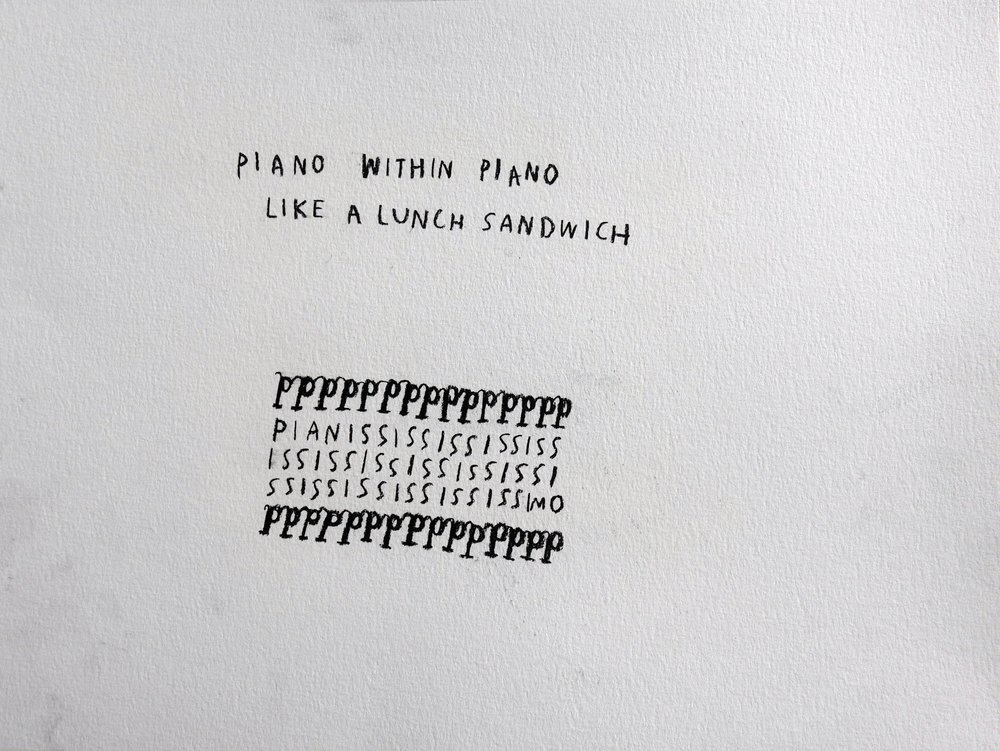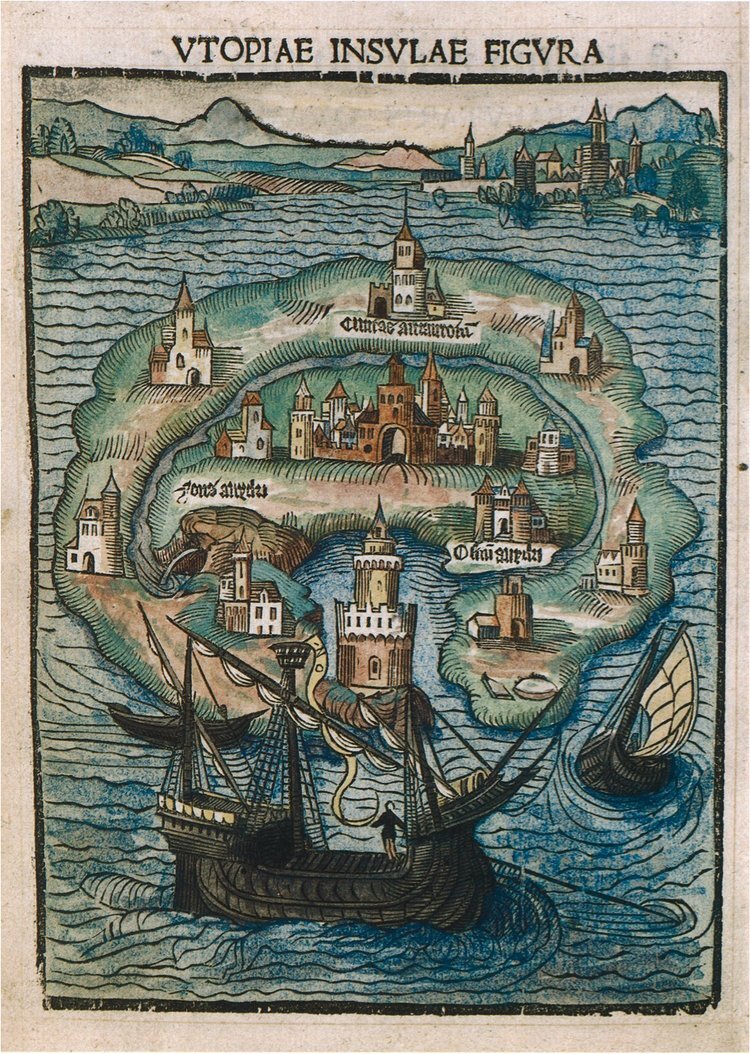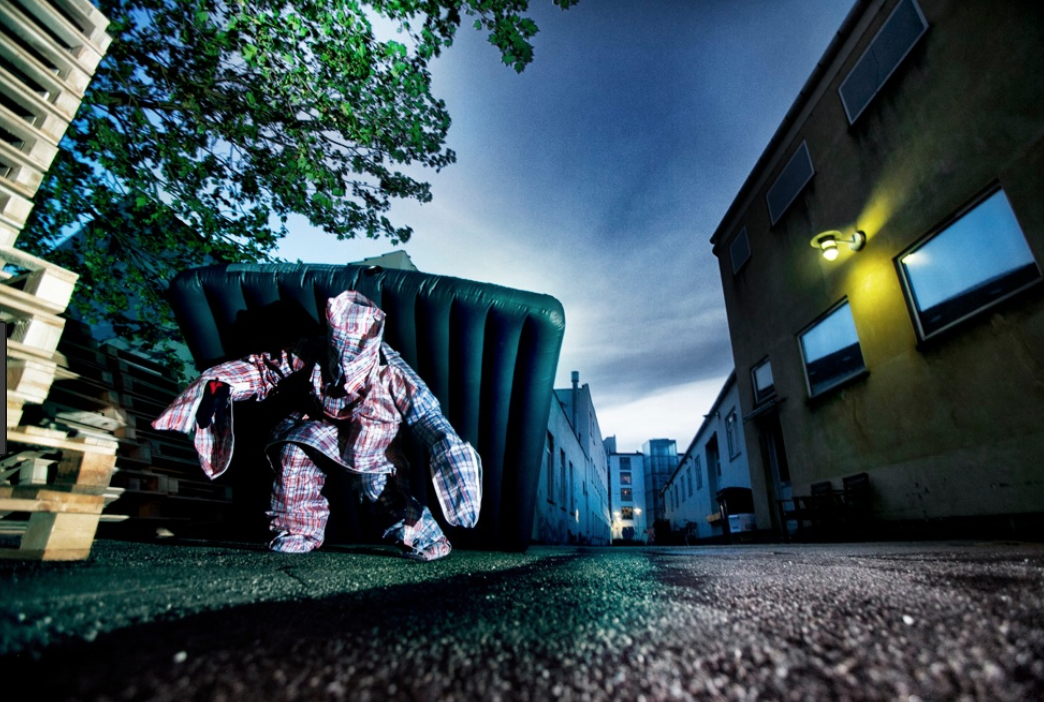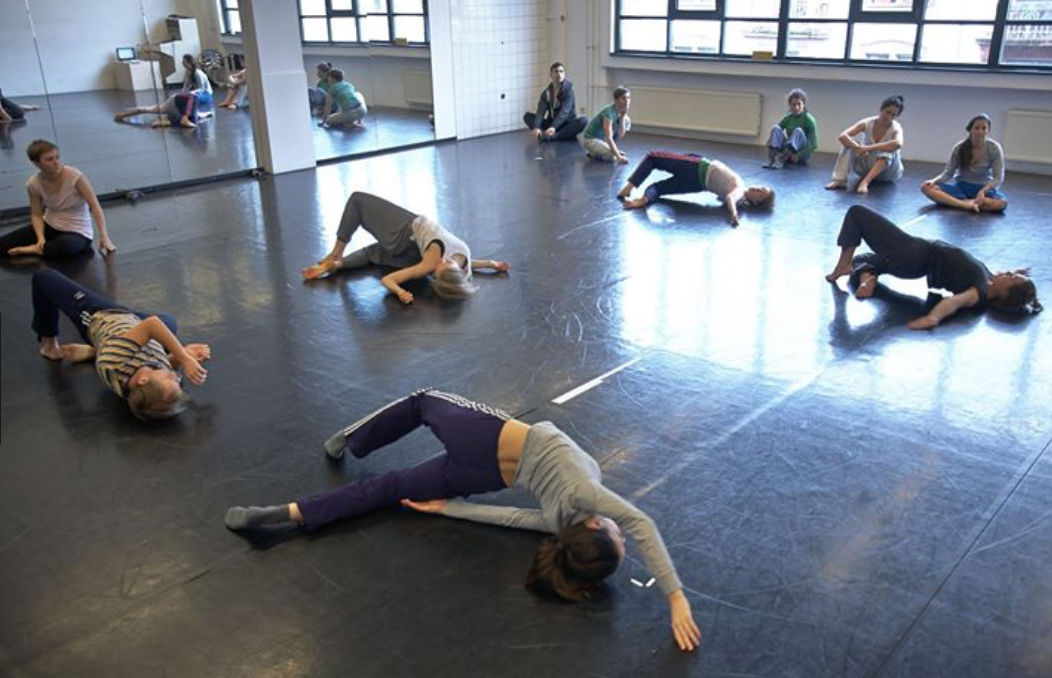SUMMER RESIDENCY 2018
BERLIN
JULY 23 - AUGUST 11
COURSE DESCRIPTIONS
METASSEMBLAGE: COLLAGING THEORY AND PRACTICE
Michael Bowdidge
In A Thousand Plateaus (1988) Deleuze and Guattari deployed a critical theoretical notion of assemblage thought of in terms of “qualities, speeds and lines” (Mcgregor-Wise in Stivale, ed., 2005). Markus and Saka (2006) identify a recent upsurge in such usage, stating that “assemblage is a sort of antistructural concept that permits the researcher to speak of emergence, heterogeneity, the decentred and the ephemeral.”
If philosophers (and, subsequently, researchers in non-artistic disciplines) have co-opted the language of the historic avant-gardes and now routinely deploy notions of collage, montage and assemblage as conceptual frameworks, what can we learn from juxtaposing these (originally) practical and creative modes of disorganisation and reorganisation with their more recently derived theoretical and philosophical counterparts?
This course aims to re-examine the relation between theory and practice by means of comparing and contrasting the use of strategies of collage, montage and assemblage in contemporary and historic artistic production with their usage in critical theory and philosophy. It also aims to explore the hybrid forms which can result from the fusion of theoretical and practical manifestations of these concepts.
We’ll begin the class with a brief look at the historic origins of collage, montage and assemblage and their contemporary manifestations as strategies for making and unmaking in a wide range of current media. We’ll then be conducting non-medium-specific, practical examinations of these creative methods, and then moving forward to look at the connections and ruptures which become apparent when we consider these modes of artistic fragmentation and juxtaposition in relation to relevant facets of theory and philosophy. We’ll also be examining and discussing artworks which are explicitly informed by these theoretical sources and also exploring what happens when these perennially useful artistic approaches are re-applied to the theoretical sources which borrow from them.
The workshop will consist of presentations, class discussions of readings from relevant contextual and theoretical materials and shorter practical exercises. Each session will relate to a practical assignment designed to encourage further exploration of the course material. We’ll be looking at writings from theorists and critics such as Manuel DeLanda, Gilles Deleuze and Felix Guattari, and Simon O’Sullivan, amongst others, as well as a wide variety of work by artists such as Sergei Eisenstein, Jim Lambie, Hayley Tompkins, Sergei Eisenstein, Meret Oppenheim, Nam June Paik, and Cathy Wilkes, along with many others.
BIOGRAPHY
Michael Bowdidge (PhD) is an artist who works with found objects, images and sound. He received his undergraduate degree in Fine Art from Middlesex Polytechnic in 1989, and completed his doctoral research at the University of Edinburgh in 2012. His project took the form of a practice-based investigation into the relationship between the later philosophy of Wittgenstein (specifically thePhilosophical Investigations) and assemblage sculpture. This research was fueled by the same curiosity about the possibilties of object-based sculptural practice which has also driven 20 years of creative production in this medium, resulting in a substantial number of exhibitions both within the United Kingdom and internationally. The notion of the sculptural as a distinctive set of qualities and criteria (after Koed) also informs his work. Michael works in a variety of educational contexts, which include academic and community settings. All of these activities enrich his teaching practice, and by extension, his creative output – as, for him, these two areas of endeavour are fundamentally intertwined.
INFINITE PLAY
Kim Schoen
Still from 'Tell Me Who I Am", Kim Schoen 2017
“To be playful is not to be trivial or frivolous, or to act as though nothing of consequence will happen. On the contrary, when we are playful with each other we relate as free persons, and the relationship is open to surprise; everything that happens is of consequence.”
—James P. Carse, Finite and Infinite Games
This workshop will look at differing conceptions of infinity and address the question: what are the differences between ‘theatrical’ and ‘dramatic’? Our two days together will be spent exploring these questions and their implications for making artwork. Exercises and explorations in the workshop will engage ideas of dramatic, or infinite, play. Finite play is theatrical because the outcome is known in advance. In tension with the existential idea that death forms the boundary that lends life its meaning, in infinite play the outcome is necessarily unknown and the only purpose of infinite play is that the game continues.
Activities will include collaborative games of play, and improvisation, in both art-making, writing, and speaking extemporaneously.
BIOGRAPHY
Kim Schoen’s work with photography, video, and text takes on the rhetorics of display in consumer culture. Recent exhibitions of her work include Komma, (Kunstverein Springhornhof) Have You Never Let Someone Else Be Strong, (MMoCA), duh? Art & Stupidity (Focal Point Gallery, UK), Imitation Game (Maraya Art Centre, Sharjah, UAE), Remembering Forward: (LAXART, L.A.), Objective Considerations of Contemporary Phenomena (MOTInternational Projects, London), and Stupidious (South London Gallery, London). Schoen’s work has been written about in the Los Angeles Times, Art in America, and her essays on repetition and photography (“The Serial Attitude Redux”, “The Expansion of the Instant”) have been published in X-TRA Quarterly for Contemporary Art. She is the co-founder and editor of MATERIAL Press.
UTOPIA REVISITED: DREAMS AND NIGHTMARES OF FUTURE PAST.
Angeliki Avgitidou
R. Buckminster Fuller, Dome over Manhattan, 1961.
Starting off from architecture and going on to films, literature, philosophy, the visual arts, comics and video games we will explore the concept of utopia, an enduring fascination of artists and thinkers alike. The presentations will concentrate on four models of utopia: The Island (isolation and containable scale), Paradise (flight form society and reconnection with nature), the School (new institutions, new order and space manipulation) and (the ideal) Cosmos (transcendental value and symbolism invested in geometry). Students will select a favorite case study from any form of art or theory and work on a concept deriving from it.
BIOGRAPHY
Angeliki Avgtiidou studied Architecture at the Aristotle University of Thessaloniki and Fine Art at Central Saint Martins College of Art and Design, University of the Arts (MA, PhD). She has exhibited internationally at venues that include the ICA (London) and she has participated in the Biennale of Contemporary Art of Thessaloniki and the Performance Biennale Deformes (Chile). She was part of the Greek national representations at the Architectural Exhibition of the Biennale of Venice (2016) and The Prague Quadrennial of Performance Design and Space (2015). Angeliki works as Assistant Professor at the Department of Fine and Applied Arts of The University of Western Macedonia in Greece. Her research interests include the everyday, autobiographical practices, body and space, gender and identity, performance and politics/activism and performance and the archive. http://iamartist.info
BAD PERFORMING FOR SHY ARTISTS
Susanne Martin
This 2-day workshop is about creating a playful, supportive space in which we can explore and improve our performer / presentation skills. No matter if you give a lecture about your research, if you have to face and answer questions on your work, or (want to) make your moving body the main tool and site of your artistic work, you have to deal with the exhilarating moment of being there with an audience – live and vulnerable. We will create a safe environment to work on being on ‘stage’, using working methods from dance improvisation, and postdramatic theatre. We will watch each other, listen to each other, applaud to each other, try out our worst performance, failed self-presentation, longest black out, and playfully get more used to our bodies being seen, our voices being heard.
Aim: Explore performing aspects of your research to us in ways unusual to yourself. Be ready to have fun. We’ll help you.
BIOGRAPHY
Susanne Martin is a Berlin based choreographer, performer, researcher, and teacher in the field of contemporary dance and theatre. She presents her work internationally in solo performances and collaborative stage works. Her artistic practice and research focuses on improvisation, contact improvisation, narrations of the aging body, humour and irony in dance, and performance as research. Her book Dancing Age(ing): Rethinking Age(ing) In and Through Improvisation Practice and Performance was published in February 2017.
She studied at Rotterdam Dance Academy, Folkwang University Essen, Inter-University Centre for Dance Berlin, and Middlesex University London, which earned her a BA, MA, and a PhD. She keeps studying with her colleagues, friends, students... and plans to continue and continue and continue...
Selection of recent performance works:
- The Fountain of Youth, solo premiered 2013 in Gothenburg, Sweden
- The Fountain of Age, solo premiered 2015 in London, UK
- Doctor D. meets Doctor V., duet with Alex Nowitz premiered 2016 in Berlin
-7 Minutes of Fame, a genre-mix performance series curated together with Marlène Colle, Lisa Stockinger, and Gabriele Reuter, since 2016 in Berlin
ART AS AFFECTIVE ENCOUNTER
Sarah Bennett
Sarah Bennett 2014
[French author Marie-Henri Beyle (aka Stendhal) wrote of giddiness and fear of falling after first seeing the Giotto frescoes at Santa Croce in Florence. The term Stendhal ‘s syndrome (or hyperkulturemia) was coined by Graziella Magherini in 1979 to describe what she and others treating tourists in Florence, understood as a psychosomatic illness].
Occasionally, experiencing an artwork causes us to falter, to stumble, to trip up - creating a palpable and visceral sensation that occurs momentarily prior to our cognitive processes being set in motion. This sensation might be understood as an affective encounter, contingent upon Nigel Thrift’s notion that ‘affect occurs through a dynamic relationship between the social and the biological’ (Thrift 2008: 221), or in Teresa Brennan’s terms, an interaction between people and an environment in what she proposes as the ‘transmission of affect’ (Brennan 2004: 3).
John Dewey identifies the ability of an artwork to affect when he states that ‘we say with truth that a painting strikes us. There is an impact that precedes all definite recognition of what it is about’ (Dewey 2005: 151). Whilst he is not negating the importance of the critical engagement that an audience can have with a piece of work, he is nonetheless ordering the process of encounter so that affect precedes criticality: ‘while both original seizure and subsequent critical discrimination have equal claims […] it must not be forgotten that direct and unreasoned impression comes first’ (Dewey 2005: 151).
Jane Bennett takes a different slant when arguing that ‘… the trace in [Doris] Salcedo’s work always short-circuits the interpretative endeavour, offering too little content to ground a narrative of absent characters, yet too much to obviate an increasing bodily investment in viewing’ (Bennett 2005: 61).
Affective encounters are, of course, not limited to artworks. In Proust and Signs (2008: 12), Gilles Deleuze draws our attention to the passage in Le Temps Retrouvé - the final volume of La Recherché du Temps Perdu (174-5) - when the narrator trips on a uneven paving-stone, and is immediately compelled to seek the source of the sensation’s exact significance to him, something important that he needs to recall.
The difference between the instant of the encounter when affect, which according to Thrift is non-representational, occurs and the subsequent reflections upon it as cognitive processes, get going, is the central theme of this workshop.
BIOGRAPHY
Within her practice Sarah Bennett (PhD) investigates institutional sites, both historical and contemporary. She employs a range of artistic research methods and material processes including: digital recording and projection, facsimile object making, observational drawing, and embodied actions. Through this work she aims to reveal how diverse institutional systems operate, and to question the level of complicity society affords such systems, i.e. how we are implicated in their continuance. At the same time, in her methods of making and installing, she endeavours to imbue the artwork with an affective 'charge' that she hopes may elicit critical, interpretative and associative responses on the part of the audience. Sarah Bennett is an artist and academic, whose artistic research critiques the hitory of psychiatry through associated archives and architecture. She is Head of School of Art & Architecture, Kingston School of Art (KSA), Kingston University, London, and a supervisor on the Transart PhD with Plymouth University. http://www.sarahbennett.org.uk
MAKING WRITING: THE POETICS OF THE DISSERTATION
Anna Gibbs
This workshop explores the epistemological and philosophical aspects - and the creative possibilities - of the dissertation component of your doctoral work.
Focusing on activating the relationship between creative and critical components of the doctorate, we consider ways of moving between the critical and the creative, ways of making the creative critical, and above all, ways of making the critical creative.
Here we understand poetics as at once a theory of practice and a practice of theory, enabling a feedback between creative absorption and critical reflection to generate new knowledge about both the process of making and what is made. Poetics then becomes a form of research-creation in its own right rather than simply something that comes after a research which takes place elsewhere (whether in the studio, the archive or the field).
With this in mind, we will engage in a series of practical experiments in writing with rather than writing about, aiming at inventing a particular poetics for your own writing.
BIOGRAPHY
Professor Anna Gibbs teaches in the School of Humanities and Communication Arts at Western Sydney University. A member of the Writing and Society Research Centre and the Digital Humanities Research Group, she writes across the fields of textual, media and cultural studies focussing on feminism, fictocriticism and affect theory. Co-editor of three collections of Australian experimental writing, she is currently completing a book on feminist theory and electronic literature (Exscryptions: Memory, Movement, and the Unfolding of Space in Digital Writing) with Maria Angel. Her experimental and cut up writing has been widely published and internationally performed. She curated the ‘(Un)coverings: Art, Writing and the Book’ exhibition at Horus and Delores Gallery, and is currently collaborating with artists Elizabeth Day, Julie Gough and Noelene Lucas on The Longford Project, which works with the colonial history of Tasmania to turn the coincidence of common ancestry into reconnection and reconciliation in the present.
SILENCE/SILENCED
Elena Marchevska
This class will work with the concept of silence and will consider silence from multiple positions: as a servant of power, as a lie, as a punishment, as a luxury good, as the reason for creation, as an object we both do and do not recognize. In a world saturated with noise, this class will ask whether we should desire or fear silence-or if it is even ours to choose. We will also explore through practice what is aesthetic of silence, proposition brought by Susan Sontag. We will reflect on the work of John Cage and Merce Cunningham, Doug Wheeler, Hito Steyerl , Christine Sun Kim, Susan Philipsz etc. At last, we will discuss the connection between silence and silenced, using Sara Ahmed’s concept of ‘feminist killjoy’ as a departure point. We will examines the idea of ‘feminist kiljoy’—along with the unhappy queer, the angry black woman, and the melancholic migrant—to demonstrate how our Western obsession with maintaining happiness and silence, can be problematic for those whose experience interrupts the silenced narratives.
BIOGRAPHY
Elena Marcevska (PhD) is an interdisciplinary artist and researcher (BA, Theatre directing MFA, Performance The School of The Art Institute of Chicago; PhD, University of Northampton). Following her doctoral study on Screen and feminist performance practice, she continued to focus on contemporary multimedia performance practices. For a number of years, her primary interest was on the use of the screen in performance. Through exploring performances which brought together screen, somatic performance practice and auto ethnography, she has increasingly turned her attention to relationships between performance, female body and digital writing. She is currently working on research about radical self-organised performance practices in South East Europe and their urban manifestation.
www.elenamarcevska.com
WALKING PRACTICES AND CYCLIC JOURNEYS: ENTERING THE WOOD
Herman B. Mendolicchio
Still from: Going Nowhere 1.5
Simon Faithfull, HD video, 9min, 2016
The practice of “walking in the forest” and the notion of “entering the wood” contain some magical and mystical elements that can challenge our modern way of living. Walking in the forest becomes a counter-narrative to our current hypermobility, a symbolic search for balance and equilibrium in the contemporary urban schizophrenia. The two-day workshop will address several ideas related to the concept and practice of walking, the notion of cyclic journey, as well as questions and approaches connected to sustainability, environment, cultural nomadism, unproductivity, slow practices, etc.
Day one will be focused on a more experimental/experiential walk in the Grunewald forest; while the second day will be dedicated to the presentation, reflection and analysis of modes, approaches and artworks employed and developed by international artists and practitioners.
BIOGRAPHY
Herman Bashiron Mendolicchio holds an International PhD in “Art History, Theory and Criticism” from the University of Barcelona. He is a faculty member and core advisor at Transart Institute (NY-Berlin) and has worked as a Postdoctoral Visiting Researcher at United Nations University - Institute on Globalization, Culture and Mobility (UNU-GCM).
He is Lecturer at the Cultural Management Programme of the University of Barcelona, and Coordinator of the Postgraduate Course on International Cultural Cooperation.
His current lines of investigation involve the subjects of intercultural processes, participation, globalization and mobility in contemporary arts and cultural policies, the interactions between artistic, educational, media and cultural practices in the Mediterranean, the cultural cooperation between Asia and Europe and the impact of new technologies on art, communication and contemporary society.
He has participated in several international conferences and developed projects and research residencies in Europe, Asia, USA and the Middle East.
As an art critic, editor and independent curator he collaborates with international organizations and institutions and writes extensively for several international magazines. He is Editorial contributor at Culture360 – Asia-Europe Foundation (ASEF), Managing Editor at ELSE – Transart Institute, and co-founder of the Platform for Contemporary Art and Thought, InterArtive.
WALKING OUT OF CIRCLES
ECE Pazarbasi
Experiments have shown that when we go for a walk, our hearts pump faster allowing the blood to circulate faster and oxygen is delivered to the muscles as well as to our brain like other organs. Walking also supports the brain to make connections between its cells and enhances our memory as it increases the volume of hippocampus. Yet there is also an interdependency between how we move and how we think. This 5 hour session will be a physical and mental exercise where we will overlap a critical text, 5 artistic site visits with different types of walks. Each “station” will add up to the context of the text and we will completely depend on the increased capacity of our brains to come up with new ideas on art, theory and our own physicality.
BIOGRAPHY
Ece Pazarbaşi works and walks on the merged borderline of curatorial practice and artistic research as her main profession. She has realised many projects over the issues of urbanism, digital and analogue public space, participatory art, alternative education as well as food and technology of the human body.
Since 2005 she works on alternative formats of education sometimes by directing alternative education and residency programmes, at other times by being part of them. In 2007 and 2009, she has directed and curated Meeting Point: Gülpinar and Meeting Point: Buyukhusun—a mobile education, residency and festival programme that took place in villages of Turkey. In 2015, she co-curated Everything Under the Sun Alternative Education Programme that focused on climate change from the perspective of art and food. She also teaches at Transart Institute for Creative Research, was a participant at Mobile Academy and in 2013 at Olafur Eliasson’s Institution for Spatial Experiments where she was privileged to receive a special research grant.
In 2015 Pazarbaşı has curated Insomnia Dyslexia, 5th Short Video Biennial at P74 Gallery, Ljubljana (2015). She was Istanbul Coordinator for New Museum—New York’s Ideas City (2012): Istanbul; curator of “Silent Shape of Things-Sophia Pompery” at ARTER Istanbul (2012). In Berlin she co-curated “12/12” and “Turkish Art Nice and Simple” exhibitions at Tanas Berlin (2011-2012) together with René Block. She was the assistant curator of the 52nd Venice Biennial Turkish Pavilion (2007), and project manager of "Orhan Pamuk: Museum of Innocence" for Schirn Kunsthalle Frankfurt (2007-08). In 2009 and 2010 she worked as Consultant and Program Specialist of Visual Arts for Turkey at the Strategic Planning and Development Department for Abu Dhabi Authority for Culture and Heritage, UAE. In April 2015, she was the resident curator at HIAP Helsinki.
http://www.fieldkitchen-academy.org/
ARTIST TALK: A FUGITIVE PRACTICE OVER TIME
Nola Farman
I am attracted to art works that don’t fit comfortably in the mainstream of the art establishment. Even so I don’t deny the value of the formal constraints of conventional works in terms of composition, perspective, shape, form, materials, space, kinetics, etc. I am interested in hybrid forms as metaphors for mobile knowledges that cross borders, dip in and out of the market place, ferret in the garbage of rejected ideas to make things emerge with freshness and vitality— especially when sharpened by a connection with words.
BIOGRAPHY
Nola Farman studied sculpture at Ontario College of Art, Toronto, Canada, completing her MA and PhD at the University of Western Sydney. She is currently writing and producing artworks about the absurdity of contemporary life, using the art world as an exemplar. Farman’s art practice is diverse ranging from drawing to large environmental works, installations (sound, sensors, electronics and video), artists’ books and sculpture. Commissions include public artworks in Singapore, Brisbane, Canberra, Sydney and Perth. Awards include Australia Council Two Year Fellowship (1997); two Premier's Awards, WA Civic Design Award (1995); Predominantly Landscape Environment Award (1995) with FFW Architects/Urban Planners; Mundaring Arts Centre Inaugural Prize, Self-portraiture; L.I.N. Award of Excellence (EPRA), as Public Art Consultant with Tract Landscape Architects. Diploma of Honor, Prix Ars Electronica, Linz for The Lift Project; (made in collaboration with Michael Brown), project grants from the Australia Council, ANAT, NSW Department for the Arts and WA Department for the Arts.
DIAGRAMMING RESEARCH
Geoff Cox
The diagram exists in space and time, it is a material assemblage of marks and lines of thought, a map of dynamic relations. To Deleuze, the diagram is an “abstract machine” that can offer a way to read the cartography of forces in opposition, where different knowledges collide: “It is the presentation of the relation between forces unique to a particular formation; it is the distribution of the power to affect and the power to be affected...”. The workshop takes these ideas as a starting point, responding to a perceived upsurge in interest in diagrams in the arts, and as arts practice, to explore diagrammatic forms of research: making reference to grids, cartography, drawing, cognitive/mind maps, flow diagrams and infographics. How might you draw an essay, a set of arguments, and lines of thought?
BIOGRAPHY
Geoff Cox is Associate Professor/Reader in Fine Art at Plymouth University (UK) and Associate Professor/Lektor in the School of Communication and Culture, Aarhus University (DK), currently engaged (with Jacob Lund) on a 3 year research project The Contemporary Condition funded by the Danish Council for Independent Research. As part of this, he recently published The Contemporary Condition: Introductory Thoughts on Contemporaneity and Contemporary Art (with Jacob Lund) as the first in a series of small co-edited books published by Sternberg Press (2016-). He co-runs a yearly workshop/publication in collaboration with transmediale festival in Berlin (2012-) and is co-editor of the associated open access online journal APRJA (with Christian Ulrik Andersen), as well as editor for the open access DATA browser book series (Open Humanities Press; with Joasia Krysa). He wrote Speaking Code: coding as aesthetic and political expression (MIT Press 2013; with Alex McLean), and amongst other things is currently working on a multi-authored book project about live coding, a book on aesthetic programming (with Winnie Soon) and trying to develop a research project on machine seeing. He is also an occasional artist/curator, and part of the self-institution Museum of Ordure.
SEDUCER OR SEDUCED?
Andrew Cooks
Art is about seduction where we might put ourselves—or allow ourselves to be transported—to a condition of seduction.
Seduction is a heady business. We all know about seduction: both as seducers and the seduced, for to seduce is to be first seduced—even if only by the very idea of seduction. Each seduction is an offering: will it fulfill a need; make us whole; slake some unnamed/unknowable thirst; scratch that itch?
Seduction ignites desire. But what is this desire, how does it manifest itself in artwork work when—and if— intentionally deployed? How and why do we artists make art if not to seduce by proxy?Seduction is as well bound up with surprise; and surprise really is such a wonderful delivery system.
But back to seduction and art: from Nabokov’s Humbert Humbert making us his at first unwitting and later perhaps willing accomplice or Duchamp’s teasing notes that accompany the Large Glass to de Laclos’ Les Liaisons Dangereuses to Louise Bourgeois’ tantalizing neurotics, the seduction by art (and the artist) is a tantalizing promise.
Initial readings will background this two-day workshop, supplemented by short writing assignments, presentations and discussion; and with activities and projects that negotiate winning over the other; the long or short con; duplicitous or honest; earnest or ignorant; playful or cruel?
BIOGRAPHY
A ramble through the paradoxes of space Sydney born Andrew Cooks (PhD) peripatetic practice addresses the pleasure garden as a model of created/curated space vis-à-vis his imagining. Titled Between Shadow and Memory his work examines the traverse and occupation of real and imagined space and his spatial curiosity, using pattern and scale discrepancy to effect pictorial space in painting, drawing, photographic side- glances, writing, talking and teaching. Made up of sideways glimpsing and glancing his works are accumulations which attempt the communication of a comprehensive glance; a poetic, visual totalising of space both inhabited and imagined. He describes his practice as a garden where he is the gardener. He has been teaching since 1982 in a variety of academic and community settings in Australia, Europe and the United States and as well as his work with Transart Institute he currently teaches at the School of Visual Arts in New York City and at Dutchess Community College in upstate New York.
MOVEMENT SERIES: THE POROUS BODY
Louis Laberge-Côté
This workshop will be a movement-based class during which the participants will play and experiment with several physical ideas, spatial concepts, and guided mental imagery games. No previous dance or movement experience is required, but participants should be comfortable with basic movement ideas (such as walking, running, bouncing, and reaching), as well as breathing exercises and physical contact with classmates. Participants should wear comfortable clothing (no need for sports or dance attire) and bring a yoga mat/towel if they prefer not to lie down directly on the floor.
BIOGRAPHY
Louis Laberge-Côté is a Canadian dancer, choreographer, teacher, and rehearsal director. An acclaimed performer, he has danced internationally with over twenty companies and has been a full-time member of Toronto Dance Theatre (1999-2007) and the Kevin O’Day Ballett Nationaltheater Mannheim (2009-2011). He has created over 80 choreographic works, which have been presented and commissioned in Canada and abroad. An award-winning performer and choreographer, he has received several creation, research, production and professional development grants. A sought-after pedagogue, he has taught classes and workshops around the globe and has been recently appointed Assistant Professor of Dance at Ryerson University (Toronto, Canada).
CRITICAL WRITING AND THINKING
An Paenhuysen
What is the purpose of art? What can art achieve? Why does it matter? In this course we do exercises in thinking and writing about art, both concrete as on a more abstract level. We will use imagination and fantasy to do so. In short “finger exercises" we experiment with an art writing that playfully stretches our thinking about art. Maya Angelou called it “deep talk”: “When you read me, you should be able to say, Gosh, that’s pretty. That’s lovely. That’s nice. Maybe there’s something else? Better read it again.”
The workshop will train you to think and write critically and lead you through the creative process of developing an own voice. It is praxis-oriented and asks students to engage.
BIOGRAPHY
An Paenhuysen is a freelance curator, art writer and educator living in Berlin. She loves blogging on art. An is a lecturer of art writing and cultural theory at Node Center for Curatorial Studies. Together with her Creative Forms in Art Writing class she published a series of e-books, of which the last one was about storytelling in art writing. At the Hamburger Bahnhof - Museum of Contemporary Art, Berlin An gives guided tours - her favourite artist in the collection is Andy Warhol. An's curatorial career started also at Hamburger Bahnhof in 2009, co-curating an exhibition of Paul Pfeiffer and, in 2010, together with Wolfgang Müller the exhibition Pause. Valeska Gert: Bewegte Fragmente. Recently she curated the show Up and Down at KINDL - Centre for Contemporary Art, Berlin. she studied cultural history at the University of Leuven, Belgium, where she obtained a PhD which materialised itself in a book publication in Dutch on the cultural criticism of the Belgian avant-garde in the 1920s. An continued as a post-doc fellow researching on Berlin 1920s visual culture at UC Berkeley, Columbia University New York and Humboldt-University Berlin before switching to the contemporary art world. They have a beautiful word for this crossover in German language: "quereinsteiger."
Check out the video interview by Spokehub
and the Q&A by Project Space, Vancouver
WORKSHOP: SLOW DRAWING
Andrew Cooks
In this workshop we will explore drawing time as an idea and as the reality of passing time.
Do you look at drawings and photographs in the same way?
Mechanically produced images intrinsically change the time reserved for looking. This is nothing new. In his 1982 book Another Way of Telling John Berger described this when he wrote that cameras are machines for transporting appearances. A photograph is like a trace but unlike a drawing.
A drawing by the very nature of its making is a translation; each mark a decision in relation to a motif and every other mark made. Drawings accumulate looking and judgements; actions woven together over time.
A camera treats everything within its viewfinder equally. Photographs supply information as drawings translate.
A photograph distills time as a drawing expands it.
Materials: vine or willow charcoal; compressed charcoal; a white plastic and a kneadable eraser; cold pressed rag paper for drawing or etching (min size 56 x 76 cm/22” x 30” - 76 x 112 cm/ 30” x 44” preferred) x 2 sheets min (one for each session; rags and disposable gloves (optional).
BIOGRAPHY
A ramble through the paradoxes of space Sydney born Andrew Cooks (PhD) peripatetic practice addresses the pleasure garden as a model of created/curated space vis-à-vis his imagining. Titled Between Shadow and Memory his work examines the traverse and occupation of real and imagined space and his spatial curiosity, using pattern and scale discrepancy to effect pictorial space in painting, drawing, photographic side- glances, writing, talking and teaching. Made up of sideways glimpsing and glancing his works are accumulations which attempt the communication of a comprehensive glance; a poetic, visual totalising of space both inhabited and imagined. He describes his practice as a garden where he is the gardener. He has been teaching since 1982 in a variety of academic and community settings in Australia, Europe and the United States and as well as his work with Transart Institute he currently teaches at the School of Visual Arts in New York City and at Dutchess Community College in upstate New York.
MOVEMENT SERIES: BODY TALK
Kate Hilliard
Photo: Aleks Slota
Body Talk is a movement philosophy that expands physical awareness and sensitivity, inviting this awareness to contribute to an artist’s current creative process. Classes include meditation, stretching, breathing and core-centering activities and are geared toward participants who have no prior movement training. In a collaborative environment we will examine the ways that movement languages can be critical to our creation practices and further strengthen our art. We will celebrate the body as a vessel that broadcasts our histories by engaging in movement states and gestural motifs, encouraging communication, expression and authorships derived from individualism. Participants will learn to listen to their physical impulses in order to discern their idiosyncratic nuances for the purpose of deepening their art practice.
BIOGRAPHY
Kate Hilliard is a contemporary movement artist with a practice in creation, performance, teaching and curation. Her choreographic works have been commissioned and presented across Canada and the USA. Hilliard has performed with internationally recognized dance companies including: Ottawa’s Le Groupe Dance Lab, Montreal’s Fortier Danse Création, Toronto’s Dancemakers, The Margie Gillis Dance Foundation and has performed Tino Sehgal’s Kiss at the New York MoMA and Art Gallery of Ontario. A proponent of cross disciplinary performance training, Hilliard has instructed at The Stella Adler Studio of Acting in Manhattan teaching their Physical Theatre Intensive. She is guest faculty at The School of Performance at Ryerson University in Toronto, teaching Creative Performance Studies to dancers and actors in all four years of their academic program. In 2017 Hilliard was appointed curator for dance and theatre at a newly founded creative research centre The Cultural Campus. Hilliard studied Art History at The University of Toronto and is inspired to continue her studies in Creative Practice in the MFA program at Transart Institute.
MOVEMENT SERIES: MOVEMENT CURIOSITY
Luis Lara Malvacías
Working with slow body explorations and observations through somatics approaches, we will prepare the body for easy organization and movement.
BIOGRAPHY
Luis Lara Malvacías is a Venezuelan choreographer and trans-disciplinary artist. His body of work has focused on ideas of transformation, multiplicity, authorship and the role of the audience in dance performance. His projects explore the interaction between dance, design, videos, installations, sound, new media and the visual arts, questioning preconceived ideas of choreography and modes of production and presentation. He has presented his work in New York since 1995 and has performed worldwide, from conventional venues to galleries and more unconventional spaces. Current projects include the creation of 26 collaborative duets (A-Z) with his partner Jeremy Nelson. Using significant signposts connected with life and aging, these duets look into issues surrounding mature dance makers and inquiring into the relationship of the body thinking, the body processing, the body making, and the body performing.
In 2003 he created 3RD CLASS CITIZEN, a collective initially comprising Latino artists living in NYC, which has become a platform for the NOT FESTIVAL - a nomadic and kaleidoscopic conceptual artistic object, embracing ideas of cross-cultural and global artistic collaboration. Instalación Sur from 2001 and Channel Sur from 2005 are two of his several cross-cultural, multi-disciplinary projects involving collaboration with local artists in countries in Central and South America. Currently, he is an Assistant Professor of Dance at UC Riverside.

